Sony X90L is a higher-end model from the Japanese manufacturer that premiered in 2023, but it will successfully continue into 2024 as well. The Sony brand and the name Bravia are associated with excellent picture quality, and this model confirms that reputation – it offers great brightness and very good black levels. Despite having fewer local dimming zones than its competitors, it makes up for this with an advanced algorithm. Additionally, after calibration, the television presents very well-rendered colours, resulting in a natural and cohesive image reminiscent of IMAX cinema. In everyday use, X90L performs excellently, mainly due to the image processor, which effectively scales lower resolution content, and the recording function from the built-in tuner, which is becoming increasingly rare in today’s televisions. Sony is also closely linked with the world of PlayStation, and in this regard, X90L Sony does not disappoint. It is equipped with HDMI 2.1, VRR, ALLM, and a convenient Game Bar, making it a good choice for gamers who expect smooth gameplay and quick response times. However, even in such a successful model, there are some drawbacks. Gamers may be disappointed by the lack of support for HGiG, which could enhance image quality in HDR games. Furthermore, Sony has yet to introduce an update that would reduce input lag in Dolby Vision mode – something achieved in the higher model, the A95L. Those who prefer slimmer devices should know that although Sony X90L looks elegant thanks to its aluminium frame, it is not one of the thinnest televisions on the market. Even though X90L is already a year old, it remains a solid piece of equipment that combines good picture parameters with functionality and support for gamers. It is a successful choice for those seeking a versatile high-end television.
- Matching (Score)
- Our verdict
- TV appearance
- Where to buy
- Contrast and black detail
- HDR effect quality
- Factory color reproduction
- Color reproduction after calibration
- Smoothness of tonal transitions
- Image scaling and smoothness of tonal transitions
- Blur and motion smoothness
- Console compatibility and gaming features
- Input lag
- Compatibility with PC
- Viewing angles
- TV efficiency during daytime
- Details about the matrix
- TV features
- Apps
- Playing files from USB
- Sound
Sony X90L vs TCL C7K / QM7K 55"-85"
Direct compare
X90L
C7K / Q7C / MQLED85K / C79K / C71K / QM7K

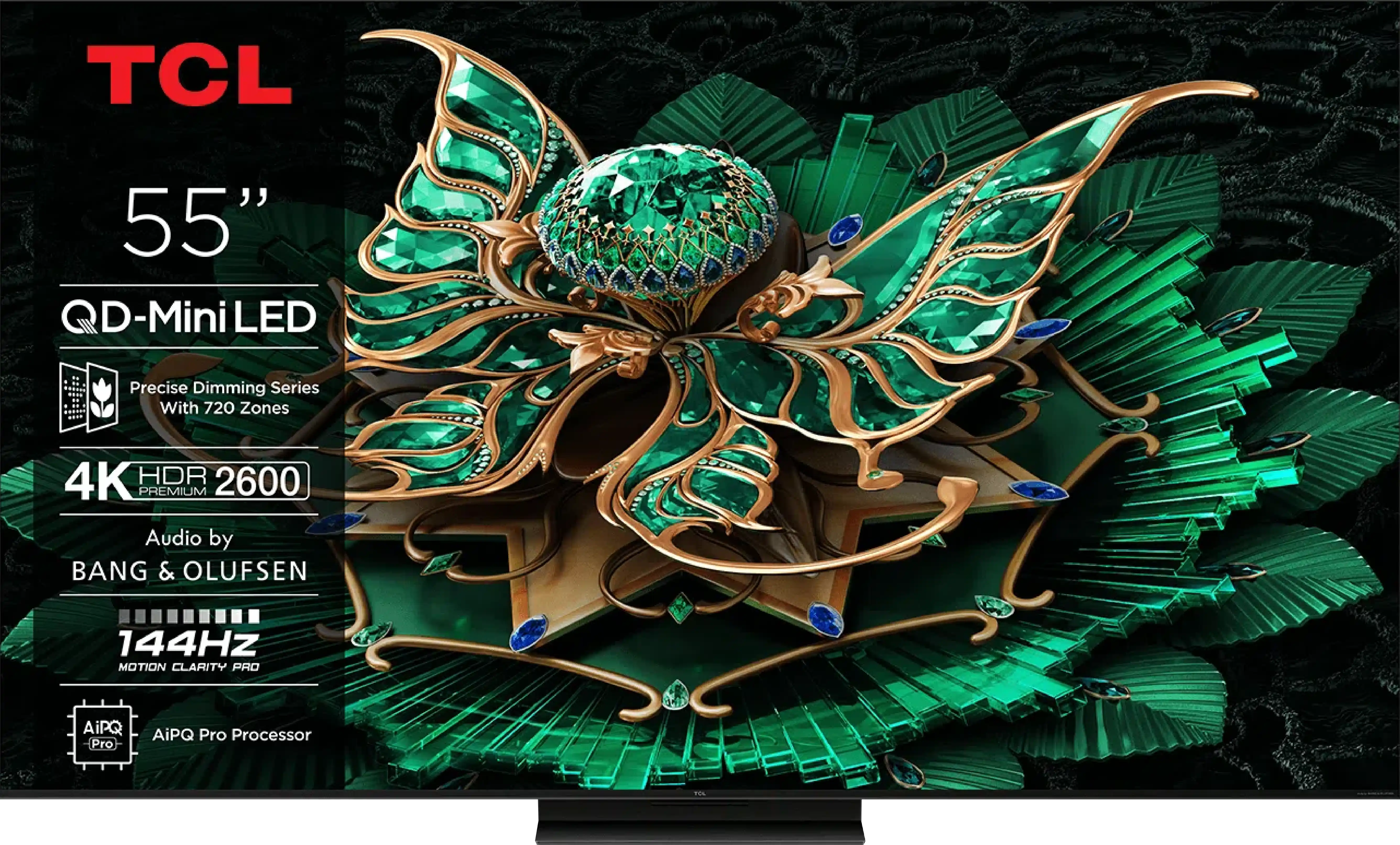
Panel type: LCD VA
Resolution: 3840x2160
System: Google TV
Model year: 2023
Complete the survey to find out the result

Panel type: LCD VA
Resolution: 3840x2160
System: Google TV
Model year: 2025
Complete the survey to find out the result

Overall rating
7.7
7.4
Movies and series in UHD quality
7.5
7.2
Classic TV, YouTube
7.5
6.9
Sports broadcasts (TV and apps)
7.4
6.8
Gaming on console
7.9
8.7
TV as a computer monitor
7.4
8.4
Watching in bright light
7.8
6.4
Utility functions
8.0
7.3
Apps
9.6
9.6
Sound quality
7.0
7.7
Complete the survey to find out what fits your preferences
Advantages
120 Hz panel – great for gamers and sports fans
Good black and contrast reproduction thanks to advanced local dimming algorithm
Support for HDMI 2.1, VRR, ALLM, and Game Bar – ideal gaming features
High SDR brightness (785 cd/m²) – performs excellently in well-lit rooms
Google TV operating system – intuitive, rich in applications and customisation
TV programme recording function without the need for an external decoder
Natural image scaling – the image without excessive sharpness presents itself realistically
Very good black - VA panel with a large number of Mini-LED zones
High brightness in HDR - over 1000 nits
Great for gamers - HDMI 2.1, low input lag, VRR, ALLM, etc.
Good motion smoothness - 144Hz panel
Supports multiple HDR formats: HDR10, HDR10+, Dolby Vision
Google TV operating system with access to a vast application base
Pleasant sound from built-in speakers (6.2.2) Bang & Olufsen
Disadvantages
No support for HGiG
Cannot enable VRR and Dolby Vision simultaneously
Only 2 HDMI 2.1 ports, including 1 e-ARC
The television isn't the slimmest - this may be a drawback for those who prefer ultra-thin models
Google TV can work with minor stutters
No USB recording and PiP function
Our verdict
There are televisions that come in for testing and at first glance seem like just another "average" model. The TCL C7K looks just that way – without grand claims of revolution, without ambitions to dethrone OLEDs. Yet after spending a few days with this model, it's hard not to conclude that it's actually a well-made product. Its greatest strengths? Very good picture quality at a reasonable price. MiniLED combined with QLED filtering provides vibrant colours, high brightness, and contrast that really impresses in this class. Motion in sports or gaming looks smooth, and the presence of HDMI 2.1 and 144 Hz refresh rate makes gaming on this model a pure delight. Additionally, there's the Google TV system – it offers a vast range of possibilities: from voice control to AirPlay support, and access to all the most important applications.
Are there any drawbacks? Certainly. MiniLED still has its limitations, and in the most challenging cinematic scenes, compromises in dimming can be noticed. Google TV also doesn't always run perfectly smoothly. However, these are rather minor issues that don't overshadow the overall picture – which is indeed very positive. It's also worth highlighting the difference between versions. The 50-inch version we tested can surprise, but the 55–85 inch models perform significantly better – they have more lighting zones, even higher contrast quality, and better sound. So if you're considering purchasing the C7K, it's definitely worth opting for a larger size.
TV appearance





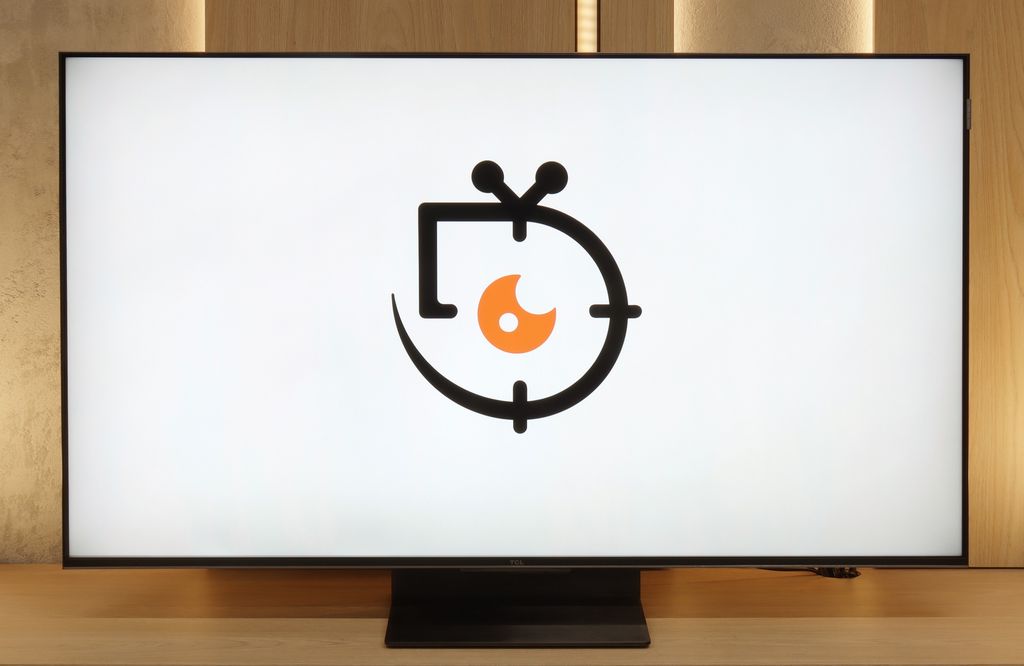
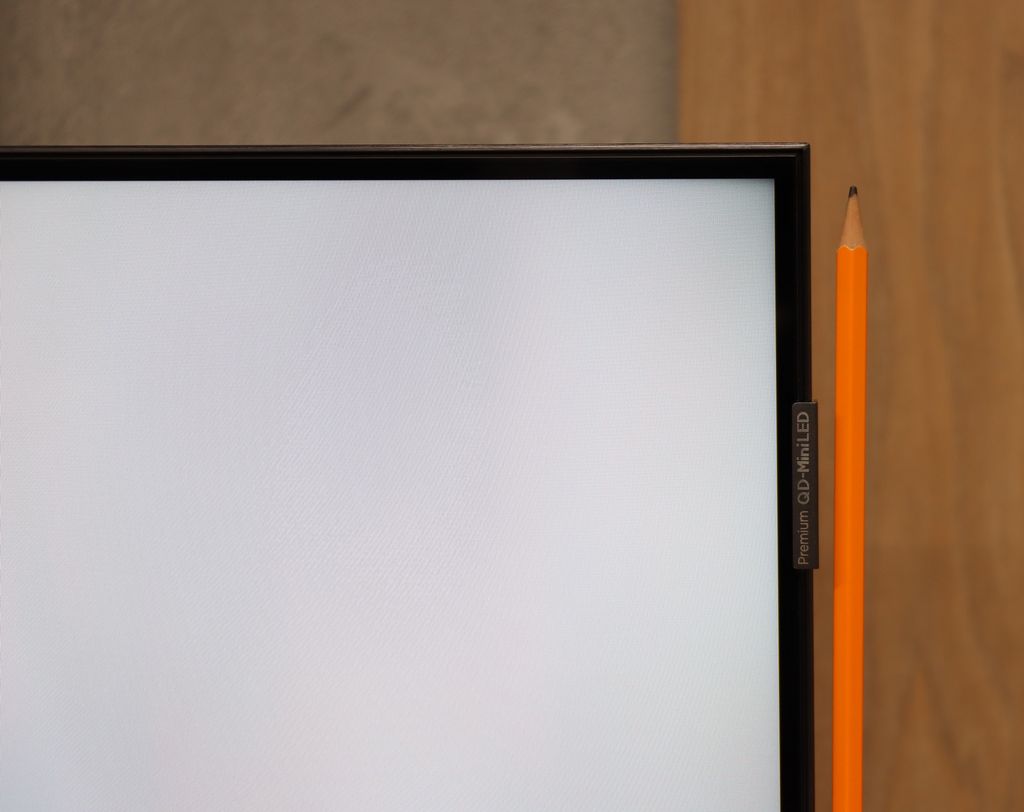
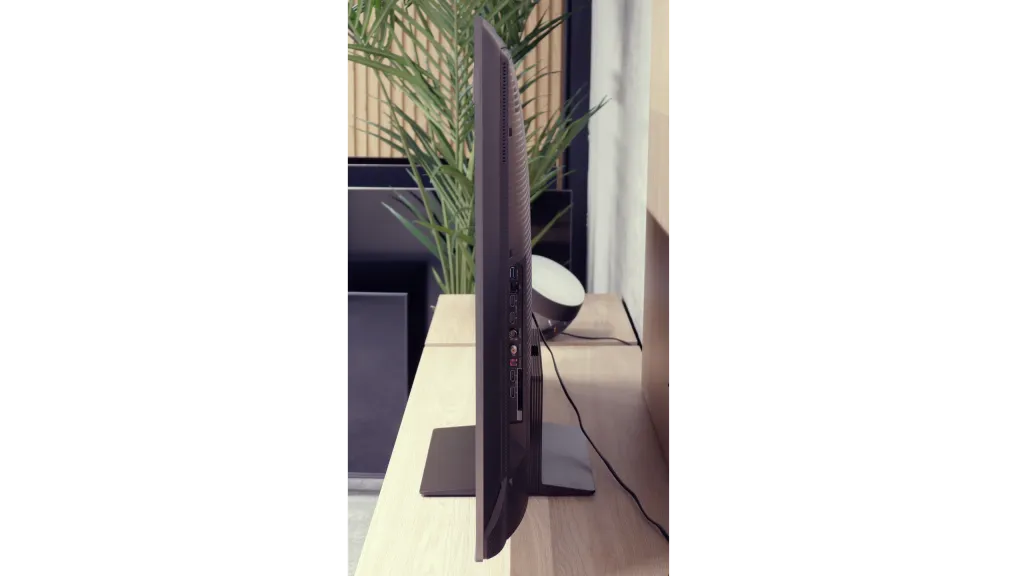
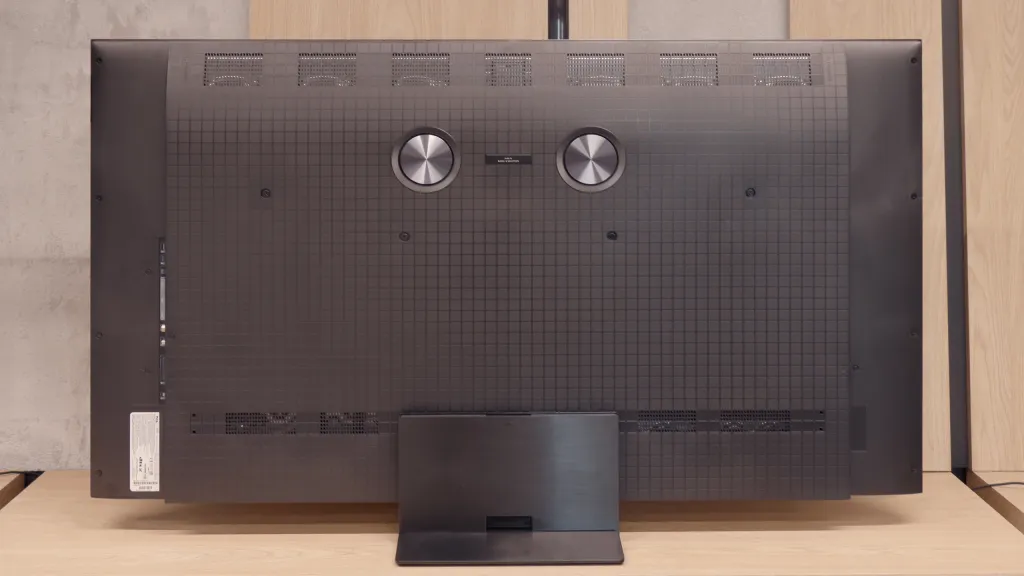
Contrast and black detail
7.6/10
8.1/10
Local dimming function: Yes, number of zones: 88 (11 x 8)
Local dimming function: Yes, number of zones: 1008 (42 x 24)
Contrast:

Result
87,500:1

Result
14,400:1

Result
99,250:1

Result
9,550:1

Result
6,300:1

Result
256,000:1

Result
59,850:1

Result
22,200:1

Result
16,850:1

Result
11,400:1
Halo effect and black detail visibility:

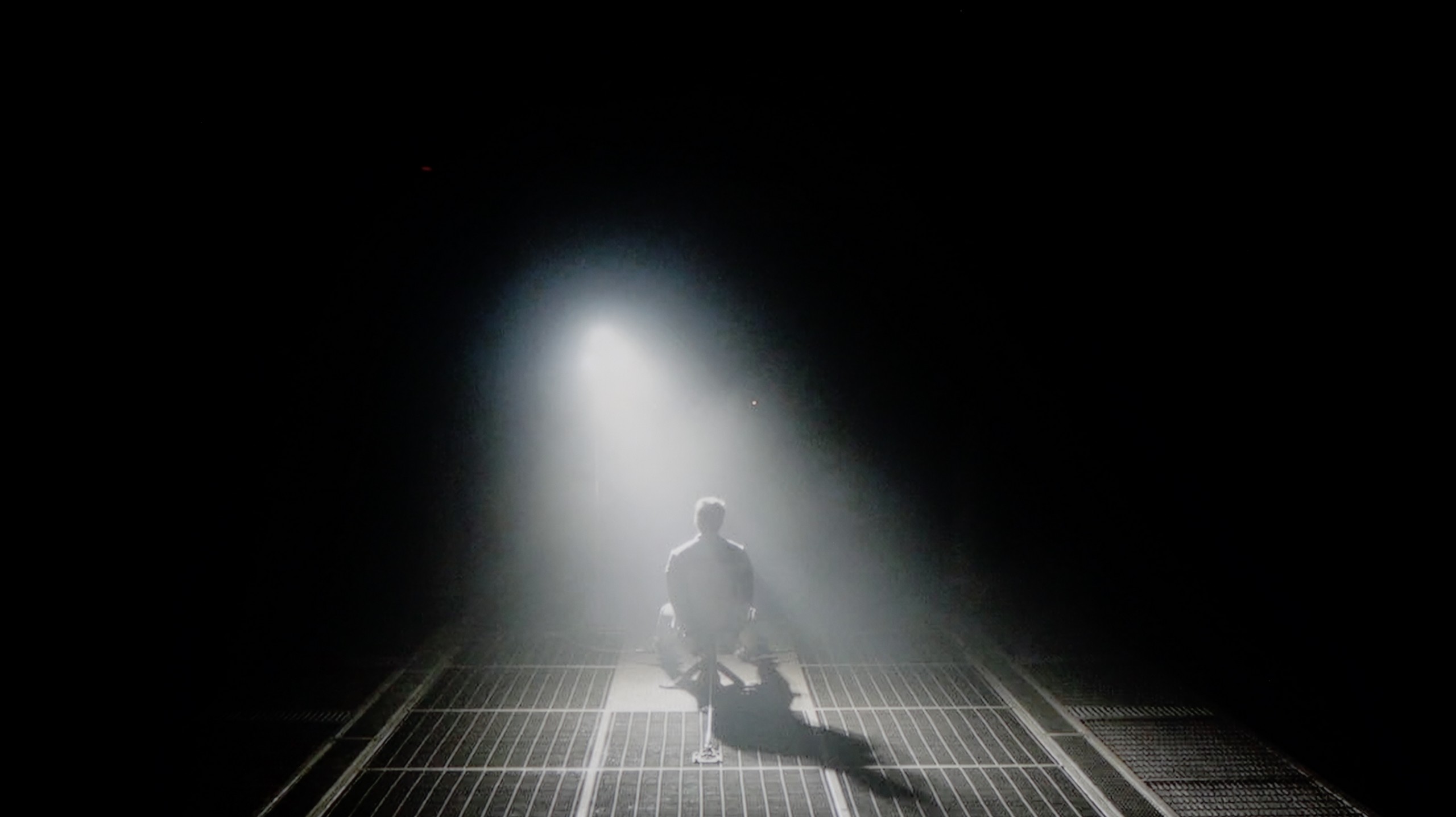
The Sony X90L television is equipped with a VA panel and in the tested size of 65', it has 88 local dimming zones. It may seem that such a number of zones does not make a great impression, but thanks to the local dimming algorithm, the television handles blacks excellently. This is clearly visible in the first and third test patterns, where the contrast reaches nearly 100,000:1. In more demanding scenes, the X90L does not achieve such spectacular results – a contrast level of 6000:1 is just fine. Light separation performs really well, as confirmed by a scene from the film "Oblivion." However, the small number of dimming zones means that the halo effect is noticeable, especially in the test film from "Sicario 2," where the lights of the helicopter cause quite a significant flare over a large portion of the screen. Despite the limited number of dimming zones, the Sony X90L manages to reproduce blacks quite well. Although it does not match the highest series of miniLED or OLED televisions in terms of black depth and contrast level, it offers solid results that are sufficient for most demanding users.
The results of black and contrast tests in models ranging from 55 to 85 inches are very similar, which is why in the main part of the evaluation we refer to the 65-inch version. It is a natural phenomenon that larger sizes mean a greater number of local dimming zones, and in the case of 65 inches, we counted over 1000. The effect is very good – the contrast is at a high level and performs definitely better than in the smallest, 50-inch variant. Typical MiniLED limitations are still visible, such as the halo effect or slightly too aggressive dimming of the image, however, here they are less noticeable than in the smaller model.
For comparison, it is worth recalling that the 50-inch TCL C7K, despite surprising with the use of as many as 336 dimming zones, had difficulties managing the backlight in more complex scenes – overexposures or loss of detail occurred. In larger sizes, this problem does not completely disappear, but thanks to the greater number of zones, its impact on the perception of the image is less bothersome.
HDR effect quality
6.7/10
6.2/10
Luminance measurements in HDR:

Result
912 nit

Result
680 nit

Result
678 nit

Result
640 nit

Result
797 nit

Result
1108 nit

Result
405 nit

Result
865 nit

Result
290 nit

Result
848 nit
Scene from the movie “Pan” (about 2800 nits)


Scene from the movie “Billy Lynn” (about 1100 nits)


Static HDR10


Dynamic: Dolby Vision
Dynamic: Dolby Vision


HDR luminance chart:
TCL C7K / QM7K 55"-85"
HDR luminance
Sony X90L
HDR luminance
HDR on the Sony X90L TV looks promising. The luminance chart showed that the television has a solid power reserve, reaching a maximum of 1000 nits in synthetic tests. However, how does this perform in real-world scenarios? In scenes such as the opening of Life of Pi or the final sequence from The Meg, the TV is able to deliver this power on HDR content, reaching about 800 nits. Unfortunately, displaying small light elements on a black background, as seen in the scene from Sicario 2, poses greater challenges for the X90L – here the results drop to around 600 nits. Despite this, when compared to competing models with mini-LED technology, the effect looks very good and can shine just enough to impress us. Notably, the colour gamut coverage is commendable, with a score of 96% for DCI-P3 and 76% for BT.2020, indicating good colour reproduction in HDR content.
In terms of brightness, the models ranging from 55 to 85 inches in the C7K series are truly impressive. Under the best testing conditions, the 65-inch screen reached over 1200 nits, which in practice means that the brightest scenes can shine with almost cinematic brilliance. These are not just dry numbers from measurements – during viewings, the white skies, explosions or reflections of light on water looked extraordinarily striking, often giving the impression that the television exceeded its price class. This is particularly effective in scenes with large areas of brightness, where the screen is filled with intense light – such as in sunlit shots or during dynamic action sequences. Viewers seeking strong HDR will definitely be satisfied.
However, scenes that require precise control of the backlighting – with small points of light on a dark background – prove to be more challenging. Here, the C7K, despite having over a thousand zones, still dims the brightness to maintain deep blacks. The effect is that in films like Sicario 2 or Life of Pi, some details, like a distant lantern or single reflections, can be less distinct or blend into the surroundings. This is a compromise inherent in MiniLED technology – it provides excellent image depth and blacks at a level that ordinary LCDs do not offer, but this comes at the cost of limited visibility of the finest lights.
Factory color reproduction
6.2/10
6/10


Factory Mode
After calibration
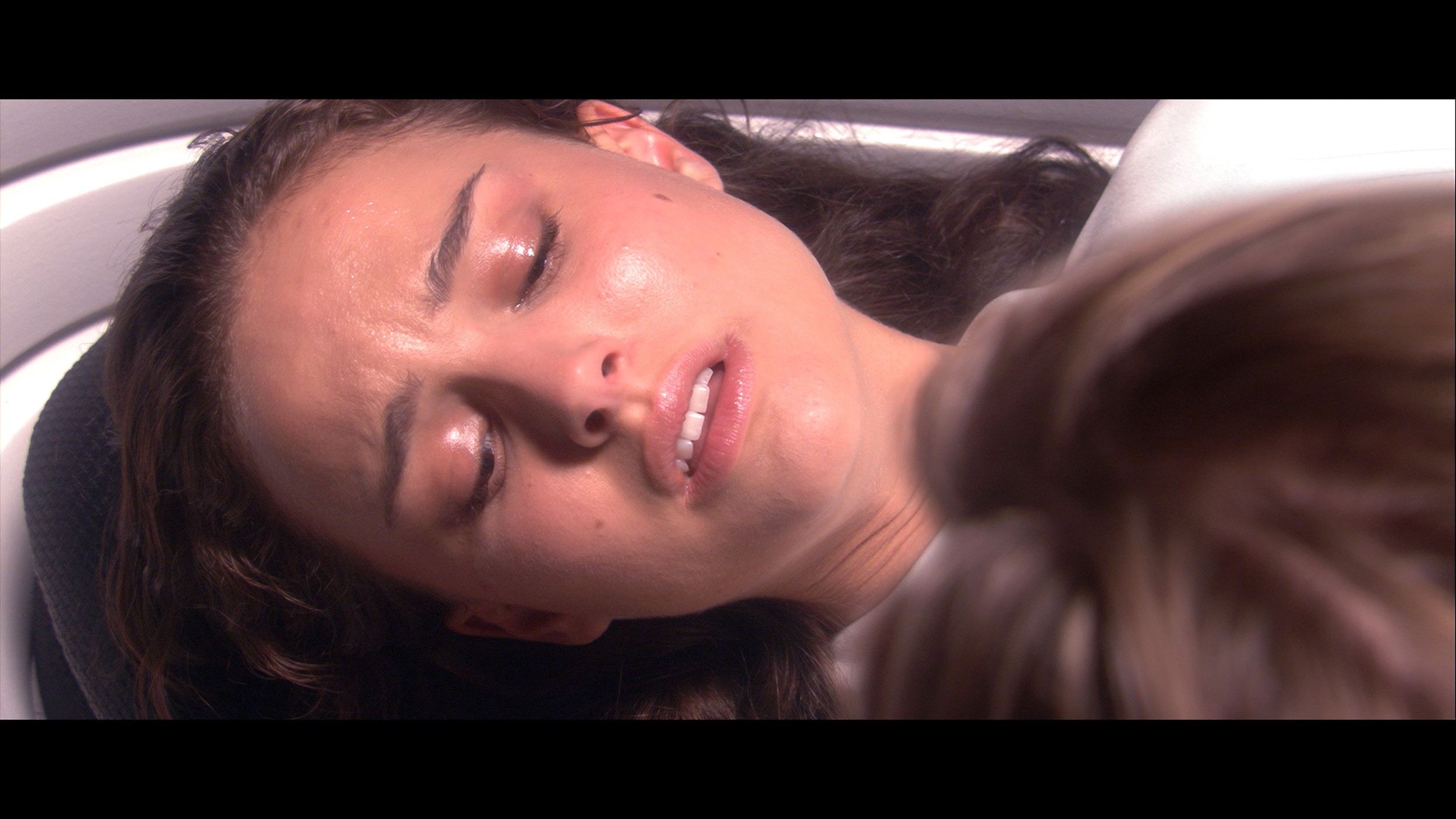
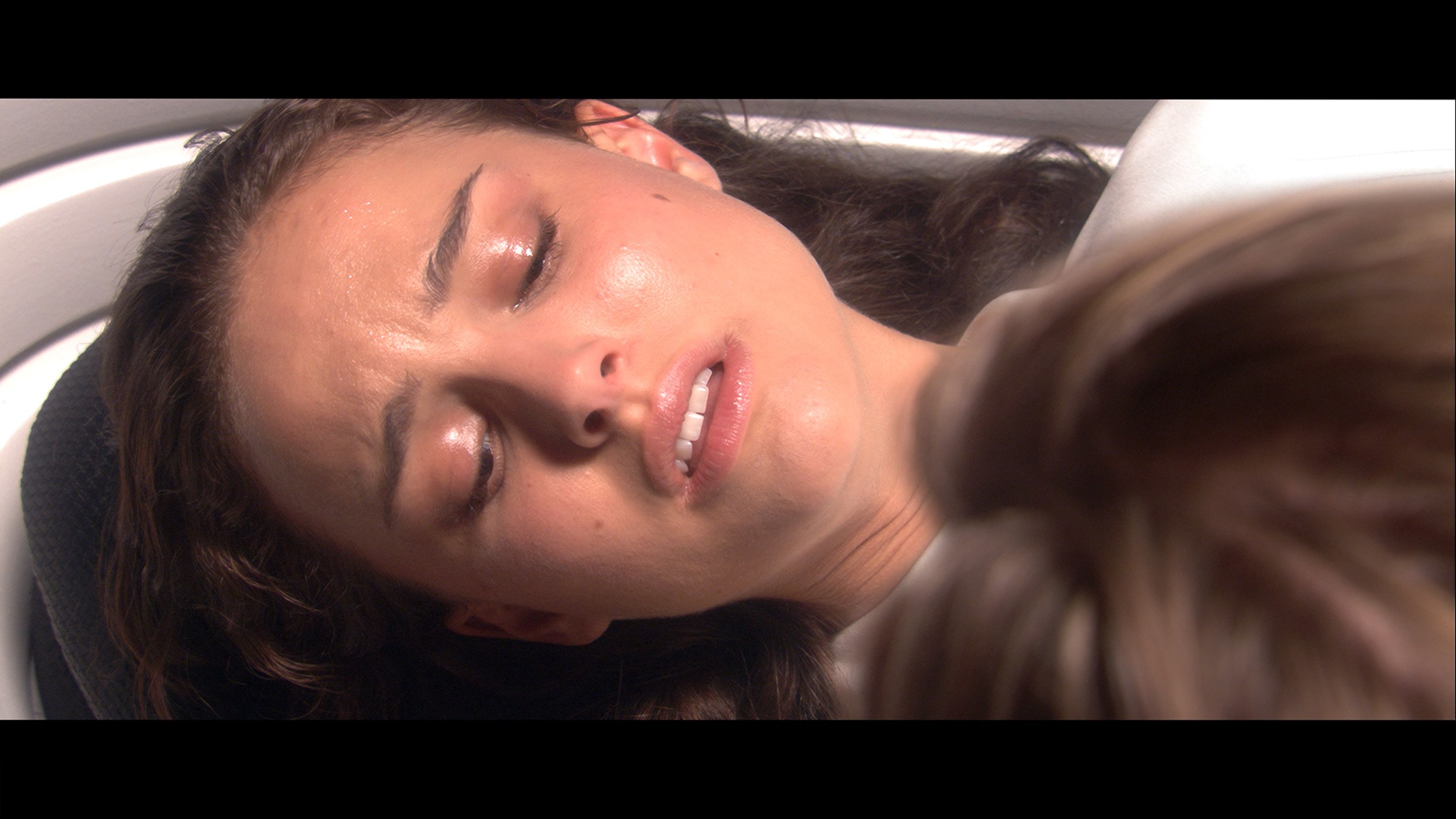
Factory Mode
After calibration
The best mode in Sony televisions is the IMAX Enhanced mode. Although IMAX is mainly associated with the cinematic experience, here the colour reproduction out of the box is average. In the case of lower quality content, such as HD – regular television or YouTube – it is worth paying attention to the white balance. It is characterised by a deficiency in red and an excessive dominance of blue, which gives the image a pinkish hue. The brightness characteristic, or gamma, for HD content is quite decent, but a slight boost could make the image appear washed out and look as if it is behind a light fog.
In 4K HDR content, the situation looks somewhat different. The white balance shows a significant boost in blue, which causes the image to become unnaturally sharp and seem artificial. Such an exaggeration in colour reproduction may not appeal to everyone, especially if one prefers more realistic shades. Additionally, the EOTF curve in Sony X90L appears quite correct at first glance. However, at the end of the graph, some fluctuations can be seen, suggesting that the television is trying to maintain appropriate brightness to avoid overexposing larger elements.
A new feature in TCL televisions for 2025 is the long-awaited Filmmaker mode, which until now could be found in most competing brands. This is great news, as this mode is considered the one that most accurately represents the original vision of the creators and is often recommended by enthusiasts of good picture quality. Unfortunately – as is often the case – the mere presence of it does not guarantee perfection. The Filmmaker mode in the TCL C7K is not without its flaws. One can point out the incorrect white balance, particularly the slight dominance of blue, which resulted in cool, somewhat greyish skin tones. But that was not the biggest issue. The main complaint was excessive brightness exposure, which was clearly visible on gamma and EOTF charts. The image was simply too bright, at times even overexposed, which affected not only the texture of the scenes but also the overall viewing experience. Some details were simply lost, and the entire image looked like someone had slightly overdone the brightness slider. As always, we decided to see what could be squeezed out of it after calibration. And that’s where it started to get really interesting…
Color reproduction after calibration
9.1/10
7.5/10

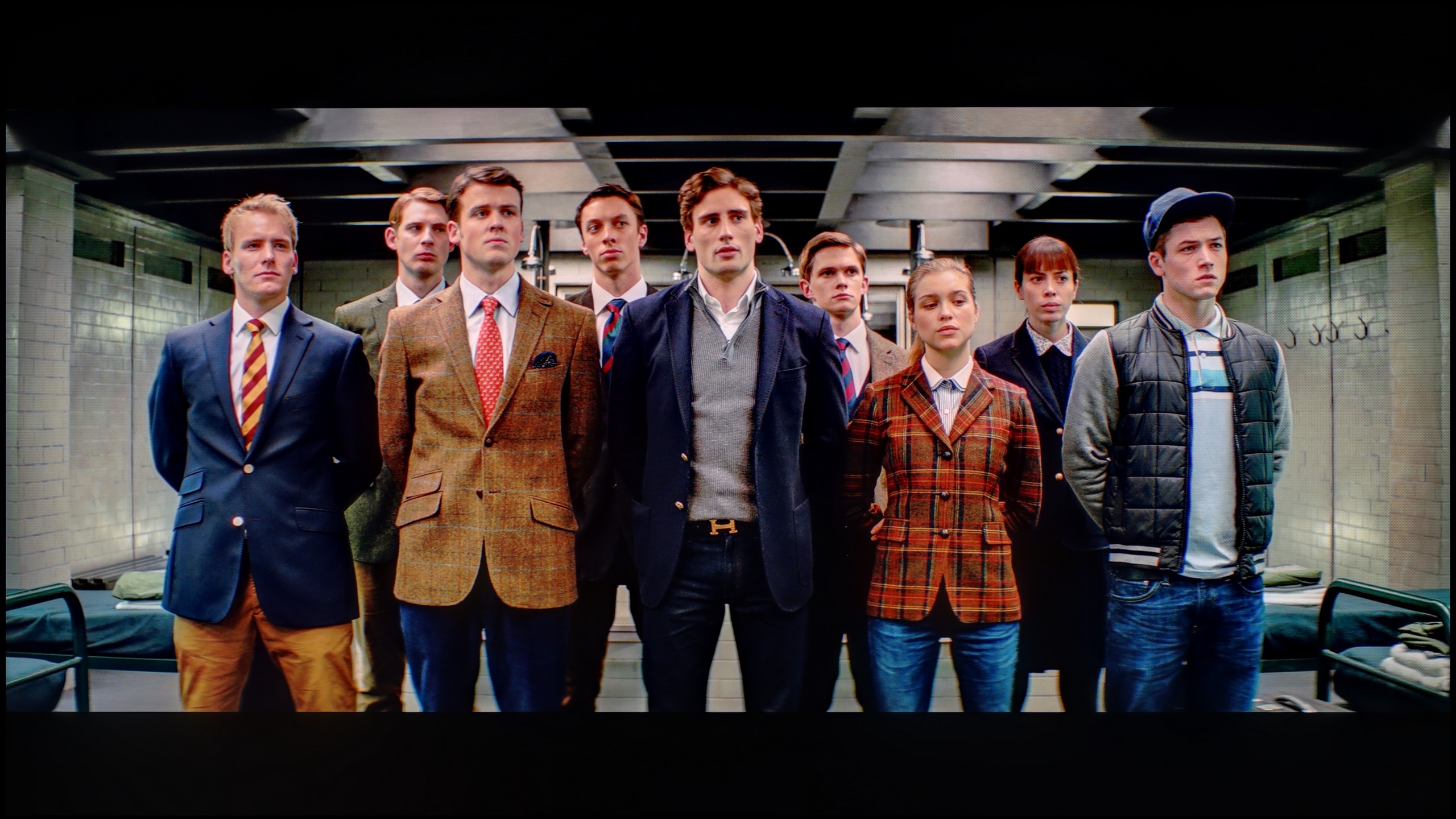

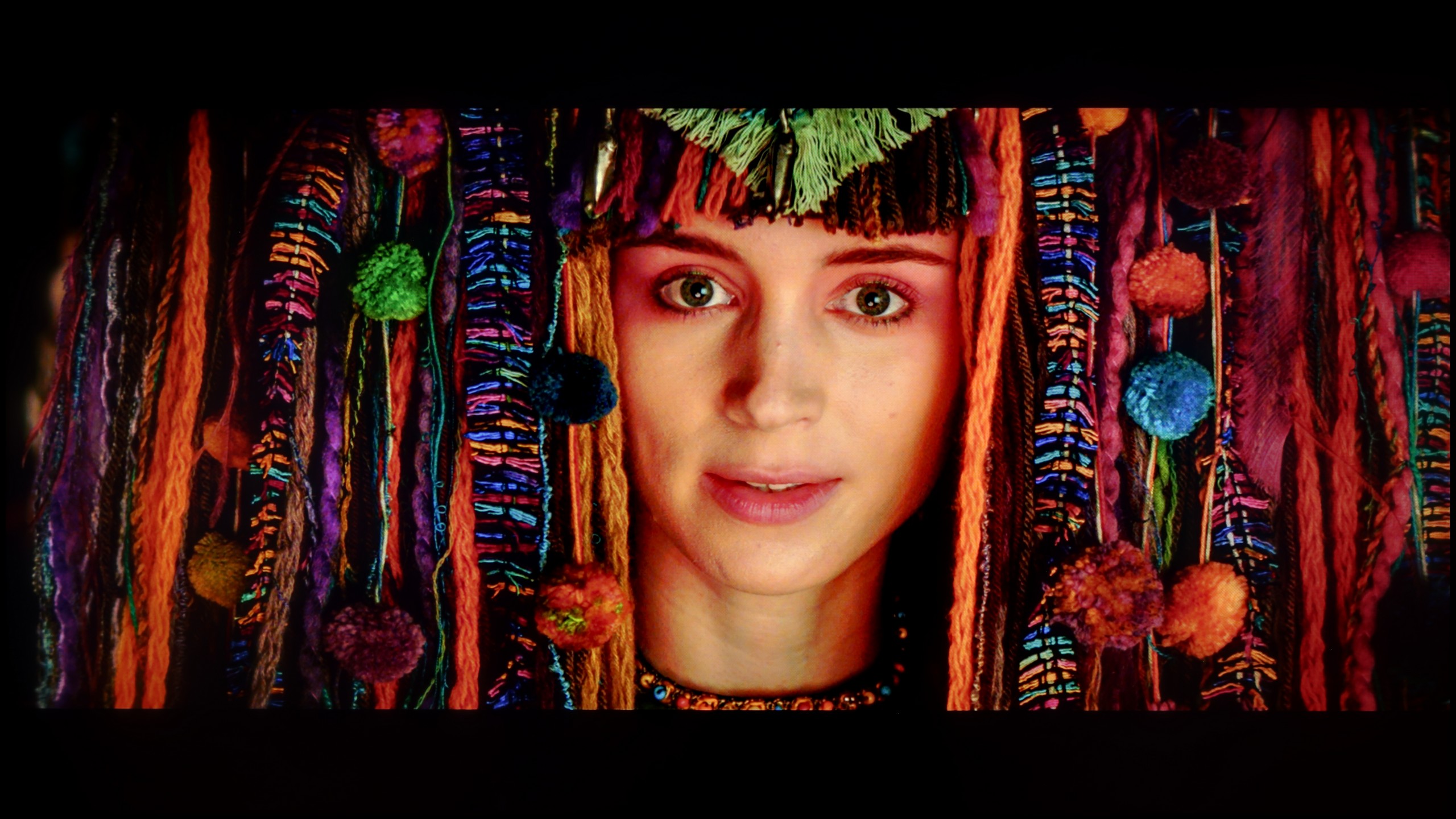
Sony offers a range of tools for improving image quality, including two additional picture modes that we decided to utilise during testing and to apply calibration to. This solution significantly facilitates the calibration process and is very effective, provided the appropriate tools are available. In the case of HD content, the white balance was almost perfectly aligned – only one shade of grey exceeds the error value of "1", which is an excellent result. The same can be said for the brightness characteristic (gamma), which presents itself nearly perfectly, with microscopic deviations on the order of 0.01.
In the case of 4K HDR content, the situation is not quite so ideal. Although the white balance has been greatly improved, it has not been possible to completely eliminate the dominance of blue colour. Nevertheless, the errors on the Colour Checker test only occasionally exceed the value of "2", which means that image distortions are practically imperceptible. As for the EOTF curve, it is worth activating the filter in the top right corner "EOTF in Films" – the graph looks correct, but the television encounters difficulties when illuminating very small elements, which is due to the limited number of dimming zones. Despite these minor errors, it is thanks to the calibration that the IMAX Enhanced mode on the Sony X90L makes watching films feel like a true cinema experience.
After calibration, the TCL C7K presented itself in a really good light, especially when it comes to SDR content. We managed to precisely tune the white balance, colour gamut, and brightness characteristics so that the colour errors on the ColorChecker palette fell below a value of 2. For the uninitiated – this is nearly a perfect result, indicating that the image closely resembles what the creators intended. Unfortunately, it looked worse with 4K HDR content. While we slightly managed to calm the white balance and correct its previous errors, it still shows that the TV has some “MiniLED traits”, particularly in brightness management. When we checked how the C7K copes with the EOTF curve on real film scenes, rather than just synthetic test patterns, it turned out that the screen still tends to slightly brighten the entire image. This affects the overall impression – the black loses some depth, and the image becomes less contrasty than it should be. Despite these minor shortcomings in HDR content, the overall reception of materials – especially in SDR – is truly very good. After calibration, the C7K is capable of displaying an image that can successfully compete with much more expensive models. Good colour tuning, natural skin tones, and pleasant brightness ensure that movie sessions and everyday content viewing are more than satisfactory.
Smoothness of tonal transitions
9.2/10
8.6/10

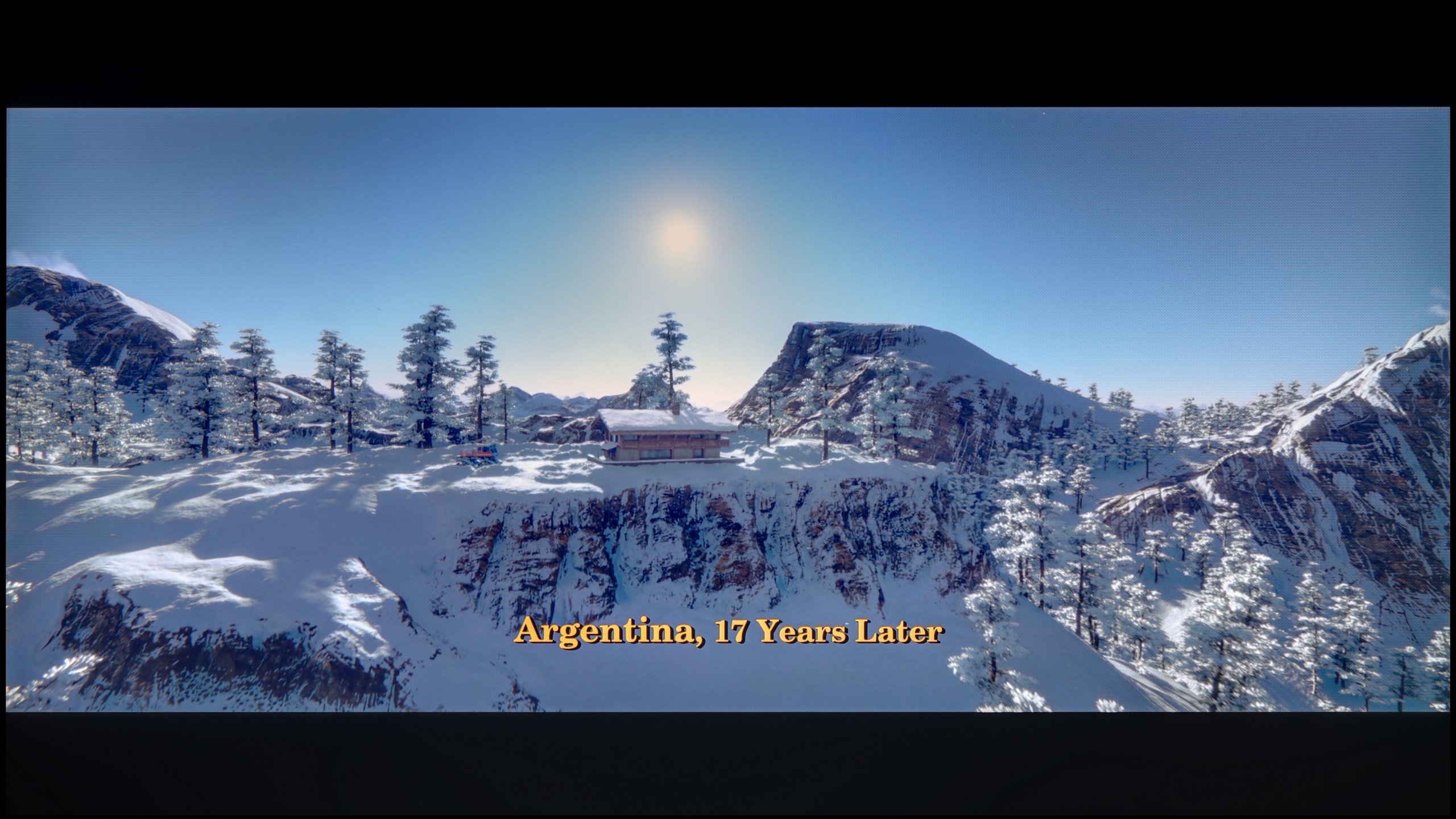



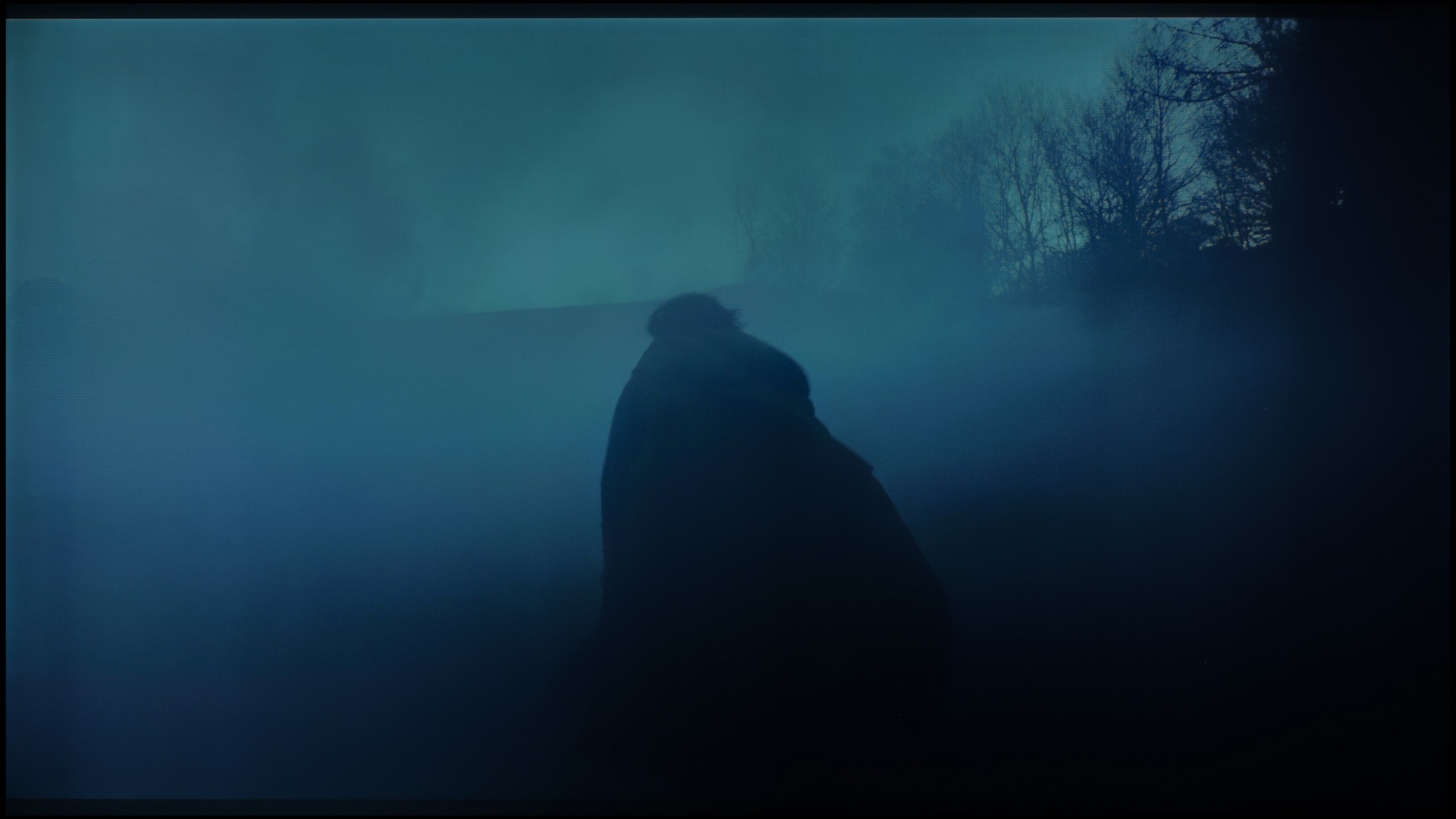

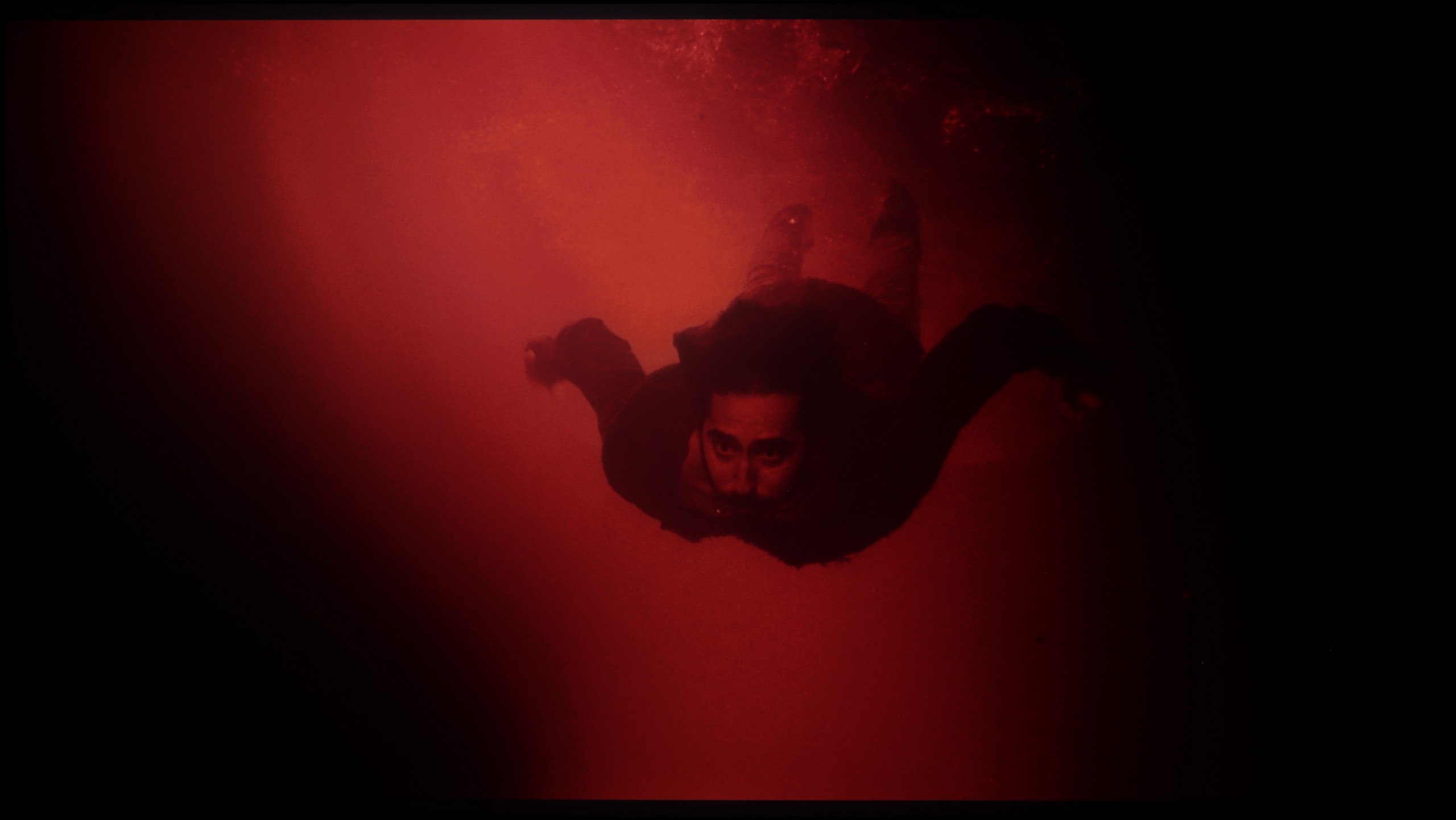




The fluidity of tonal transitions in Sony X90L is excellent. The gradation is beautiful on high-quality sources such as 4K streaming. One can only notice slight cuts on more demanding gradients, but the overall effect is very good and should satisfy even the more discerning viewers.
TCL C7K performs very well with colour gradation – in most of the tested scenes, the tonal transitions were smooth, and the colours blended together without visible outlines or the artificial effect of “blobs”. In everyday use, it is difficult to find fault with anything – the picture looks natural, without irritating transitions or digital artefacts. Certain limitations only appear in very dark tones – particularly in a heavily muted grey palette, where the television may struggle to reproduce an ideal gradation. But this is absolutely understandable, as even many significantly more expensive models in this range simply falter. Fortunately, these situations are rare and do not significantly affect the overall impression.
Image scaling and smoothness of tonal transitions
8.5/10
5.5/10
Smooth transition function

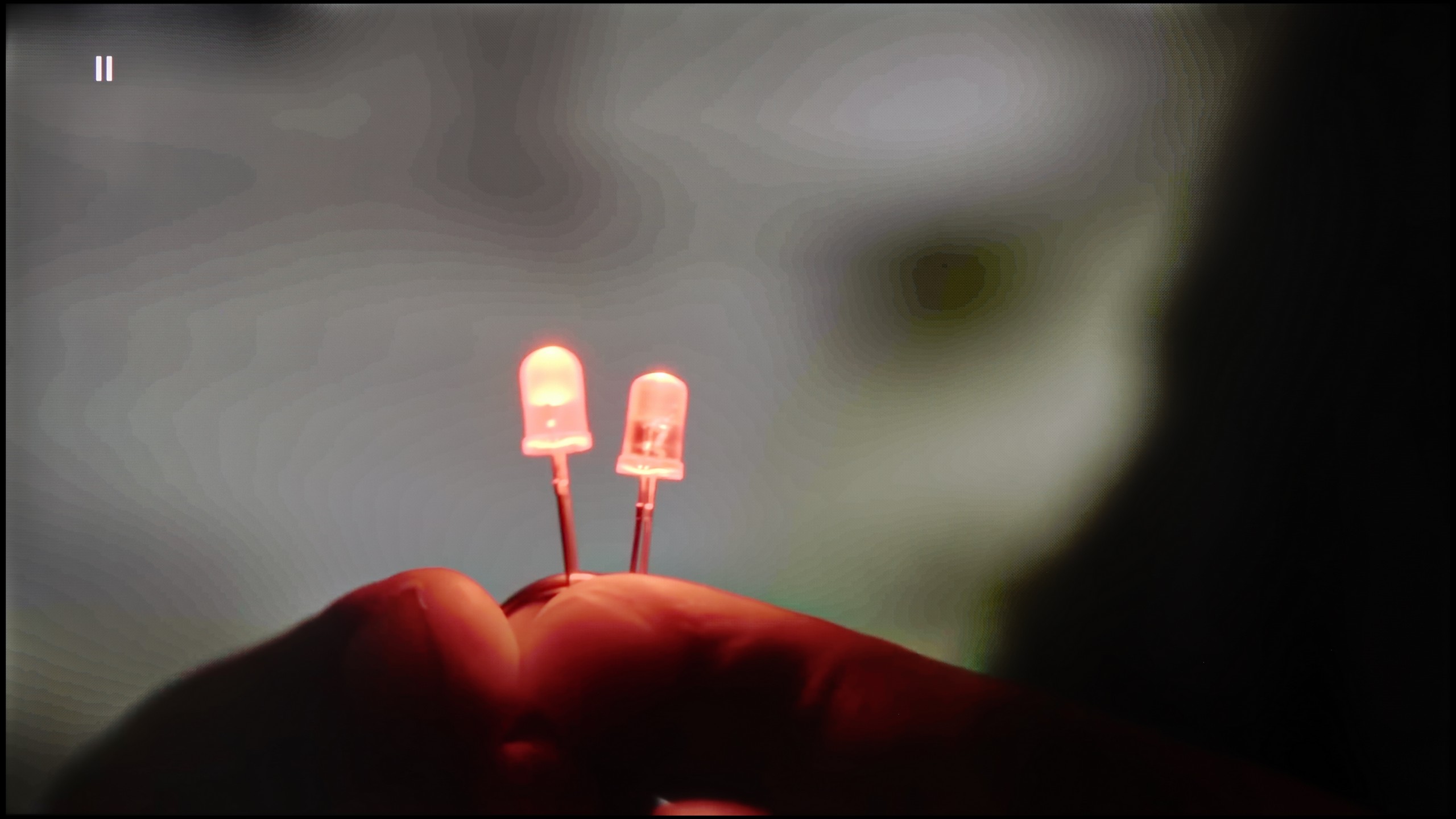
Image without overscan on the SD signal


The Sony X90L television features a tone transition smoothing function known as Soft Gradation, which is extremely effective. Even at the "low" option, the effects are satisfactory, but at the "medium" setting, it works like a dream – we recommend using this option for the best results. The image scaling on the Sony X90L is simply excellent. The image is not overly sharpened, which provides a natural effect and ensures that everything looks cohesive. It's clear that the engineers really focused on this aspect, creating a solution that is impressive and performs well in daily use. Because of this, even when watching content such as regular television or YouTube, where the image is not inherently stunning, one can enjoy a smooth, cohesive, and visually pleasing experience.
The TCL C7K features a function that, according to the manufacturer, is designed to smooth out unwanted colour transitions – a sort of rescue for less successful tonal shifts. It's called "Gradual Smoothing" and... well, it sounds ambitious, but in practice, it works very poorly. Regardless of whether we set it to low or high, the difference is minimal. What's worse, the function can cut out elements from the image that should remain. Fortunately, the film grain remains untouched, so at least it doesn't smooth everything indiscriminately, but still – it's better to simply turn this option off.
When it comes to scaling lower resolution content, it’s much better. SD and HD materials look quite decent, although at times we had the impression that the image was losing sharpness and becoming too soft – as if something was detracting from its clarity. Fortunately, with very low sources (e.g. 576p), there was no overscan effect, meaning the image was not artificially cropped – everything fit on the screen as it should.
Blur and motion smoothness
8.1/10
8.1/10

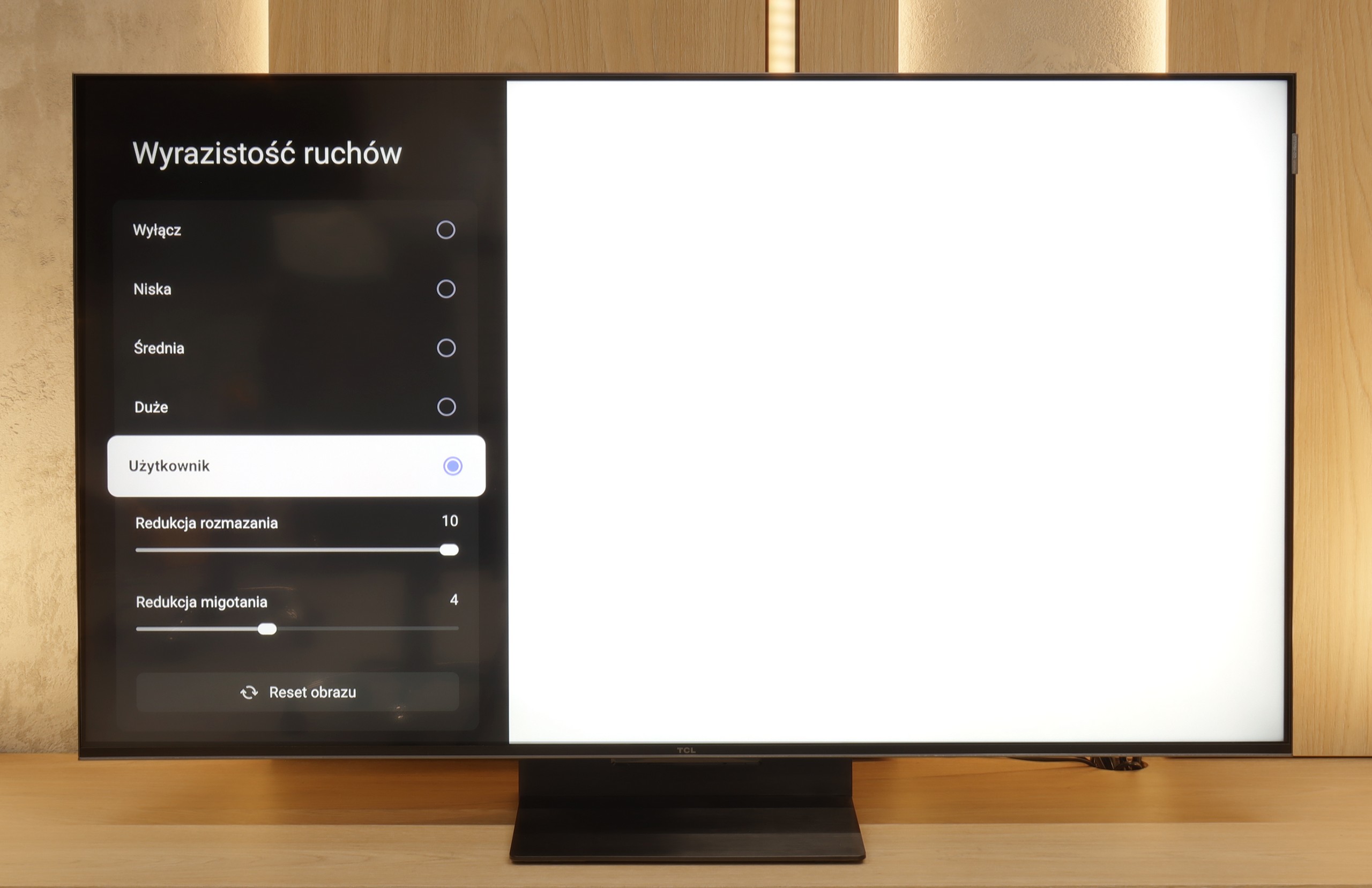
Blur (native resolution, maximum refresh rate):





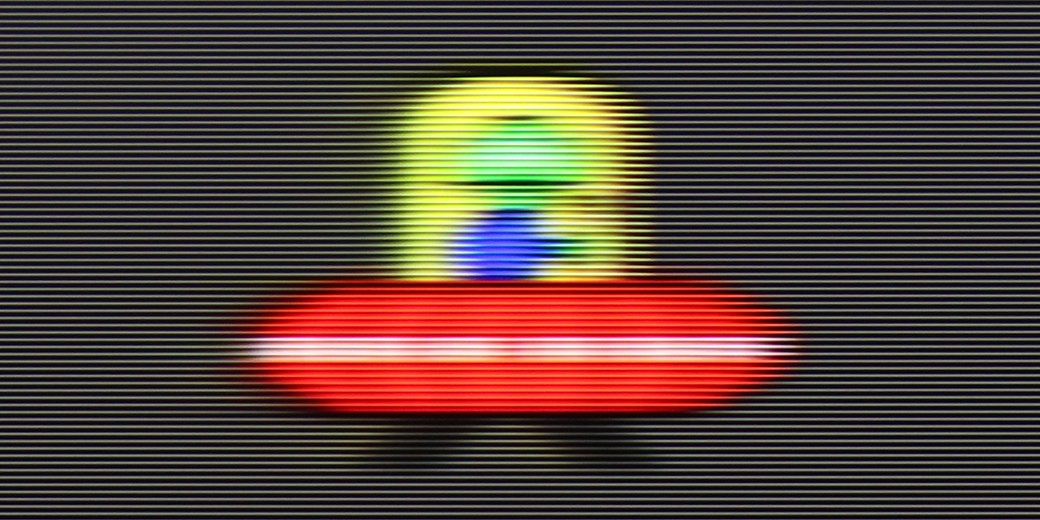
Blur (BFI function enabled):






Smużenie ():
Smużenie (4K@144Hz):



Sony X90L with a 120 Hz panel is an excellent choice for both gamers and cinema enthusiasts. The television is equipped with the Motion Flow smoothing feature, which allows for adjusting motion fluidity using two sliders: "smoothness" and "clarity." The "smoothness" slider controls the level of fluidity in motion, which helps reduce image stuttering, while "clarity" is used to minimize blur and enhance motion sharpness, which is particularly useful in dynamic scenes.
The TCL C7K handles motion smoothness really very well. The matrix used in it offers a refresh rate of 144 Hz, which in itself suggests that this television is something more than a regular "60 Hz" panel. What's more – if we connect the C7K to a computer and set the resolution to Full HD. But we will write more about this in the section for gamers and cooperation with PCs. Returning to everyday use – both sports and films look very good here. Thanks to the fast panel and well-functioning motion smoother, the C7K is great for watching matches, as well as for film screenings. In the menu, we find two sliders – blur reduction and flicker reduction – which allow you to adjust the smoothness effect to your own preferences. At lower settings, we get a more cinematic effect, with a slight choppy motion. At higher settings – the image becomes more theatrical, overly smooth. Everyone can set it to their liking.
Console compatibility and gaming features
7.8/10
9.8/10
- ALLM
- VRR
- VRR range48 - 120Hz48 - 240Hz
- Dolby Vision Game Mode
Yes, high input lag
- Correct implementation of HGIG
- 1080p@120Hz
- 1440p@120Hz
- 4K@120Hz
- Game bar

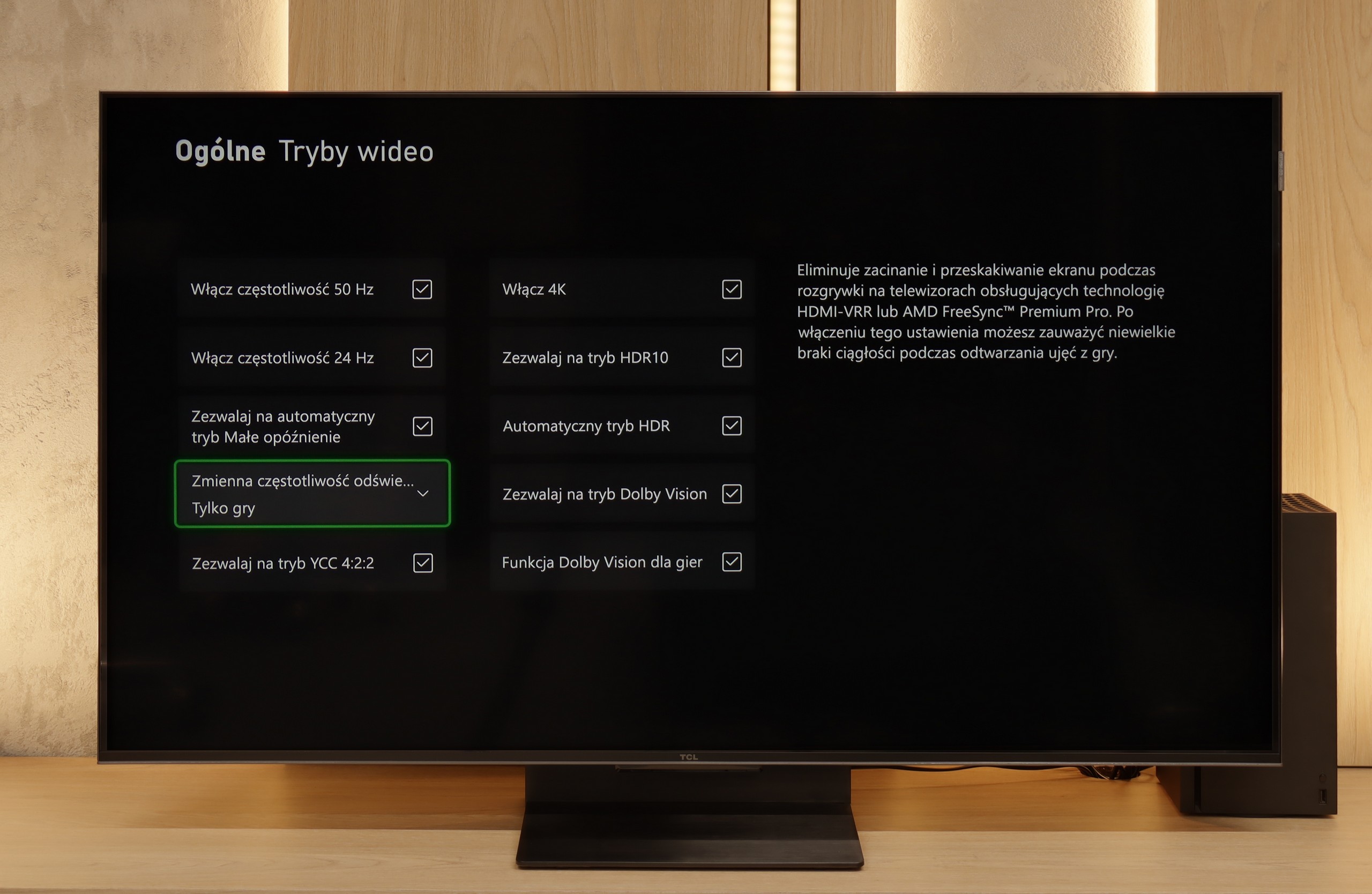

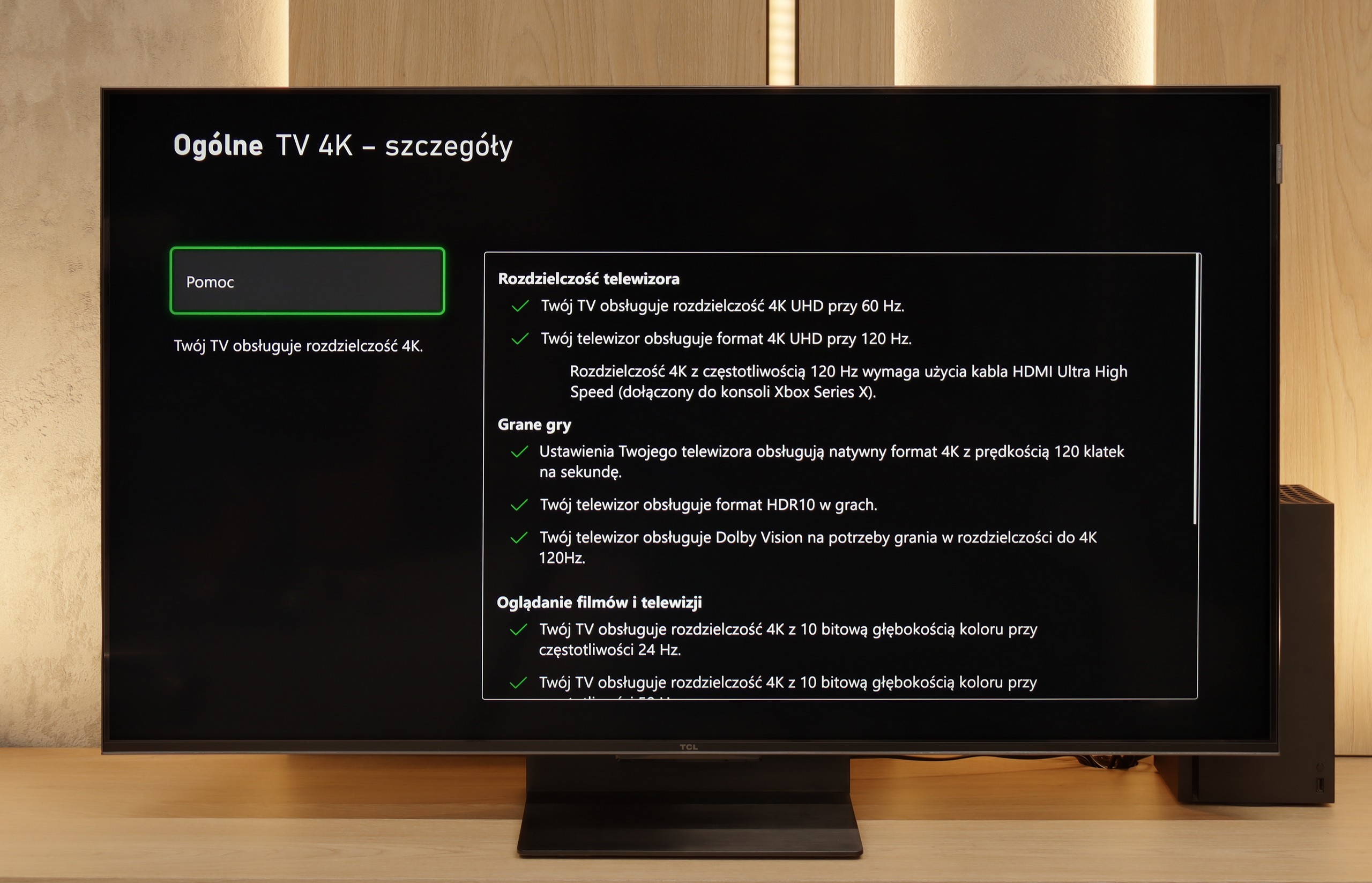

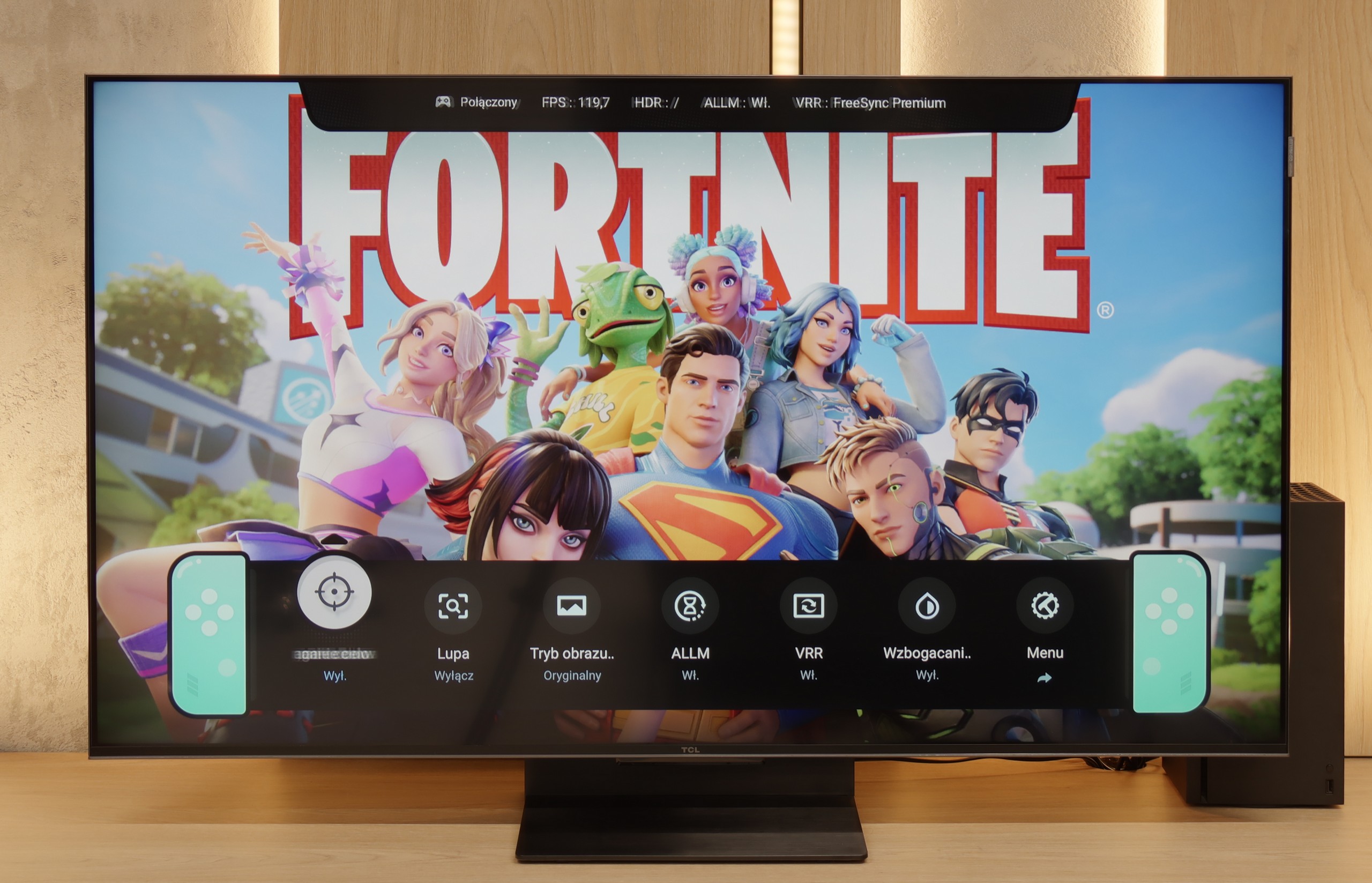

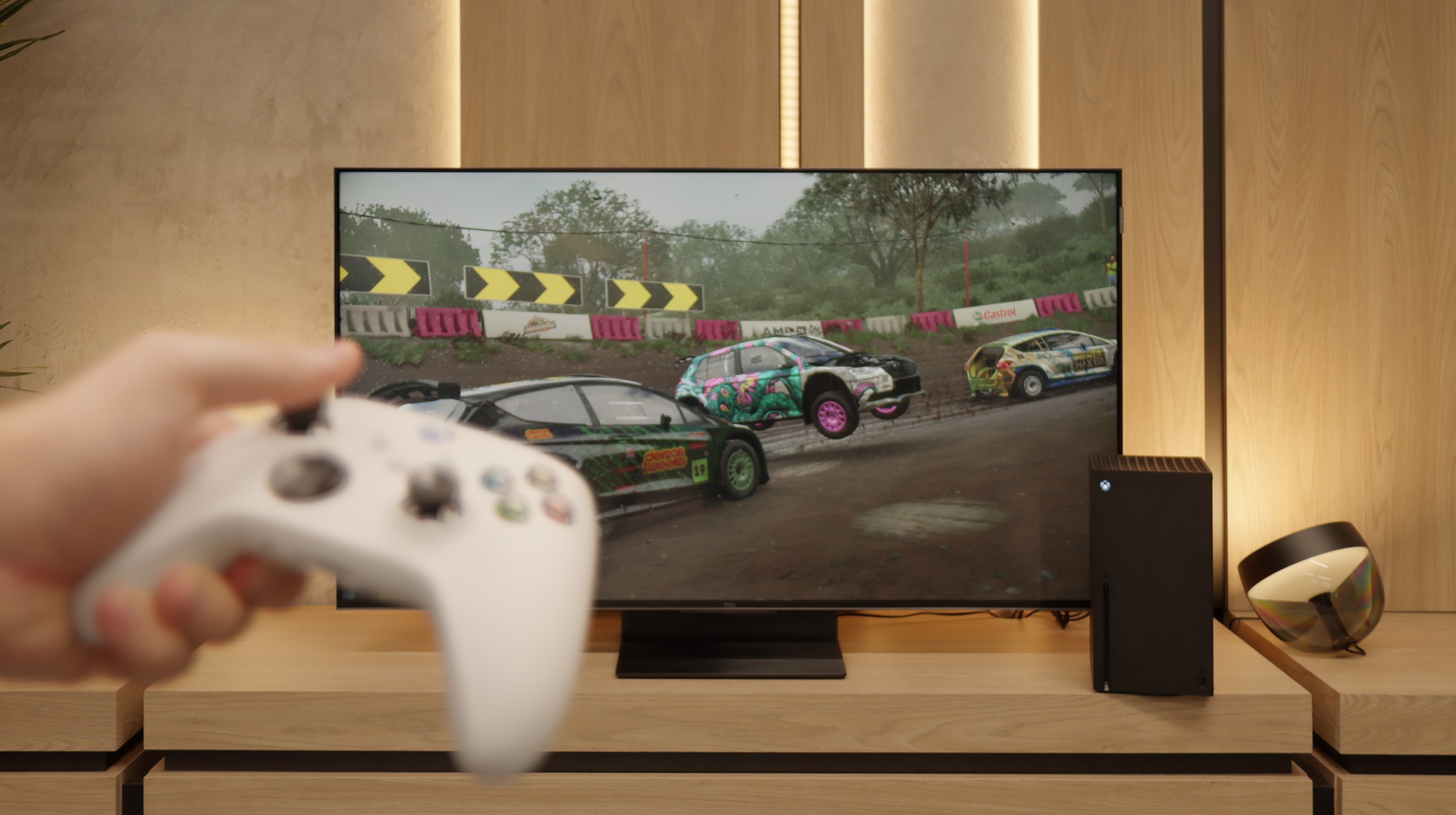
Sony X90L is a television that performs well in terms of compatibility with consoles and features for gamers. Its 120 Hz panel and two HDMI 2.1 ports with a bandwidth of 48 Gb/s allow for smooth playback of high-resolution games at a high frame rate. Gamers can also take advantage of the ALLM feature, which automatically switches the television to low latency mode, and VRR, which ensures smooth gameplay without image stuttering. The Game Bar is an additional advantage – an intuitive tool that provides quick access to the most important gaming settings and features, facilitating control over gameplay.
Unfortunately, when it comes to HDR in games, the Sony X90L has its limitations. There is a lack of support for HGiG, a standard that many gamers consider crucial for precise HDR reproduction in games. While the television supports Dolby Vision, which could theoretically improve image quality in games, the practical application of this feature is problematic. Dolby Vision in game mode is associated with very high input lag, making gameplay less comfortable and precise movements more difficult. Additionally, it is not possible to enable Dolby Vision alongside VRR. This means that despite its numerous advantages, gamers seeking the ideal HDR in games may feel a sense of disappointment.
The TCL C7K is a television that on paper appears to be the dream equipment for gamers – and most importantly, it also holds up in practice. To start with the good news: there are two full-bandwidth HDMI 2.1 ports, so we can easily connect both a console and a computer, making full use of their capabilities. The panel itself supports a refresh rate of 144 Hz, which provides a significant advantage in fast-paced games. Additionally, it comes with a complete set of gaming features: VRR (Variable Refresh Rate), ALLM (Auto Low Latency Mode), and support for Dolby Vision in games. There is also an HGiG mode that allows for an HDR effect in line with the creators' intentions. GameBar, which is an information bar for gamers. It works quickly, looks clear (like a Nintendo console👌), and shows the most important information: the current frame rate, VRR status, and even HDR parameters.
Input lag
8.7/10
9.6/10
SDR
HDR
Dolby Vision
Input lag in Sony X90L can be assessed as decent, although it is not outstanding. In Dolby Vision mode, the television operates only at 60 Hz, and the additional high input lag complicates matters as it makes gameplay practically unplayable. For games at the popular frequency of 60 Hz, the input lag is about 25 ms – this is an acceptable result, but for more demanding gamers, it may prove disappointing.
However, those more advanced gamers who have equipment supporting higher refresh rates can expect better results. With a 120 Hz signal, the input lag drops to around 12 ms, providing significantly better responsiveness and smoother gameplay, meeting the expectations of more demanding users.
When it comes to delays, the C7K gives no reason to complain. In games at 120 Hz, the input lag is around 10 ms, meaning the television responds really quickly. Interestingly, even in Dolby Vision mode, the result is very similar, which is not always the standard. Well done, TCL. At 60 Hz, the lag obviously increases a bit, but that's completely normal and applies to practically every television with a 120 Hz refresh rate or higher. The most important thing is that everything still runs smoothly and there is no sense that something is not responding to our actions.
Compatibility with PC
7.4/10
8.4/10

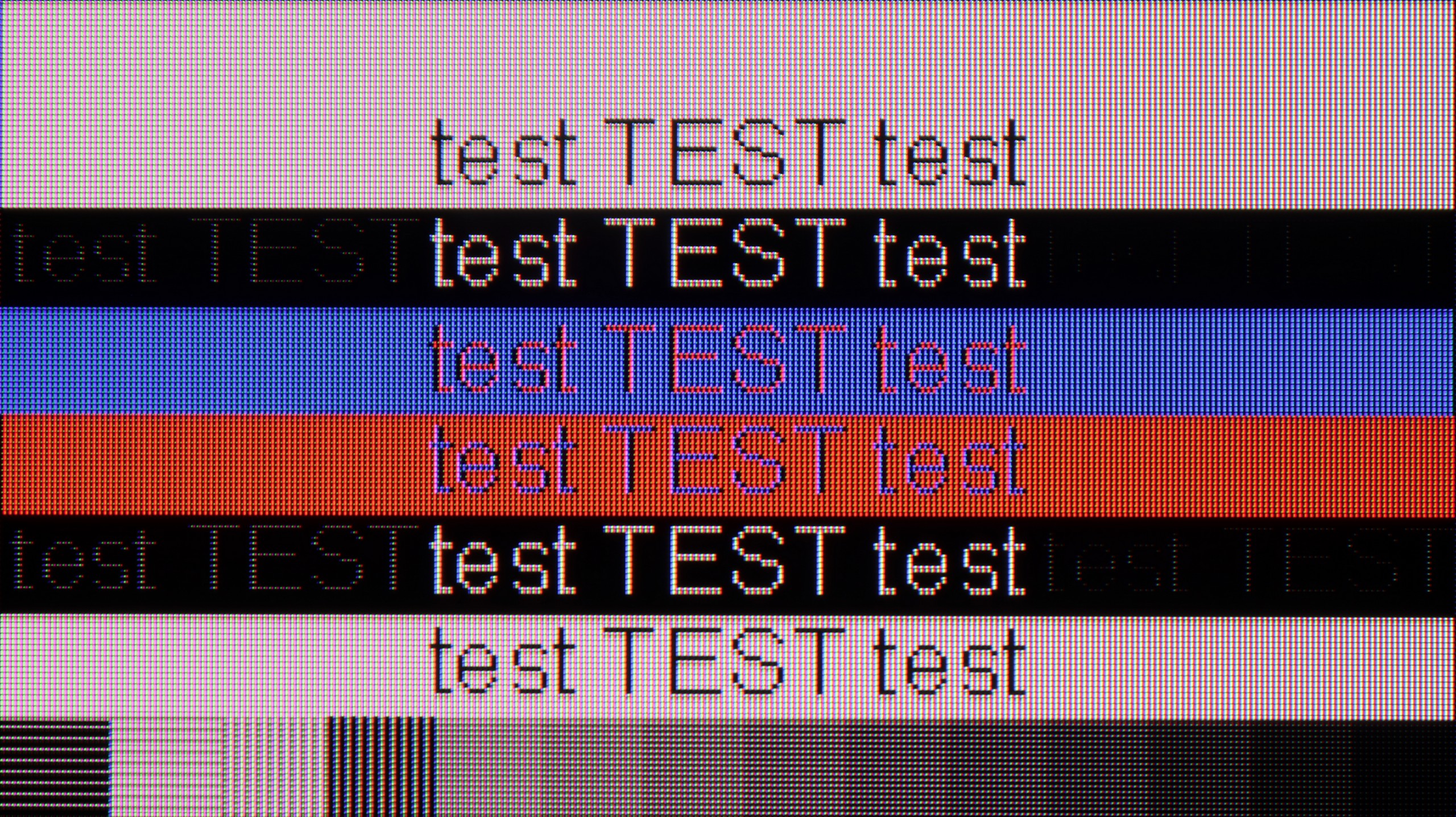
Cooperation with the PC in Sony X90L is at a good level. The X90L television supports chroma 4:4:4, which ensures quite good font visibility, important while working or browsing content on a large screen. Although there are minimal issues with font legibility on a dark background, it is not bothersome enough to pose a major problem in everyday use.
An additional advantage for PC users is the 120 Hz refresh rate and support for G-Sync functionality. As a result, gamers can expect smoother gameplay without the effect of stuttering or tearing, which significantly enhances comfort and the gaming experience.
If we intend to connect the C7K to a computer – especially for gaming – there is really a lot to play for. Here we have 4K at 144 Hz, which sounds great in itself, but if we lower the resolution, the TV can display even 280 Hz. In e-sports, where every fraction of a second counts, that really makes a difference. Added to this is support for G-Sync and FreeSync, so no matter what graphics card we have – the image will be smooth, without any stutters or tearing.
However, if we plan to place the C7K on a desk and use it like a monitor, it’s a bit less "rosy". True, it supports chroma 4:4:4, so fonts should be sharp, but with very dark letters, there is a slight blurring and dimming of edges. This is not something that immediately jumps out at you during gaming or watching, but when working with text – it can be distracting. In everyday use – rather without concern, but if we plan to place 50 inches a metre from our face, it's worth keeping this in mind.
Viewing angles
2.9/10
3/10
The viewing angles on the Sony X90L are unfortunately very poor, which is typical for VA panels. The picture quality degrades when viewed at an angle, which can be problematic when watching from a greater distance or with a larger group of people. It's a shame that the manufacturer did not use a coating to widen the viewing angles, which could significantly improve this aspect and make the television more versatile for different room layouts.
There are no surprises here – the C7K has classic viewing angles for a VA panel. That is: sitting directly opposite – it’s great. The colours look good, the contrast is strong, everything is in place. But just shifting slightly to the side and it starts to get worse – the picture loses saturation, the black becomes greyish and the overall impression diminishes somewhat. So if we are planning to watch together with several people or have a sofa that takes up half the living room – it’s worth seating everyone more centrally. You can watch from the side, but don’t expect miracles – it’s simply a characteristic of the VA panel.
TV efficiency during daytime
7.8/10
6.4/10

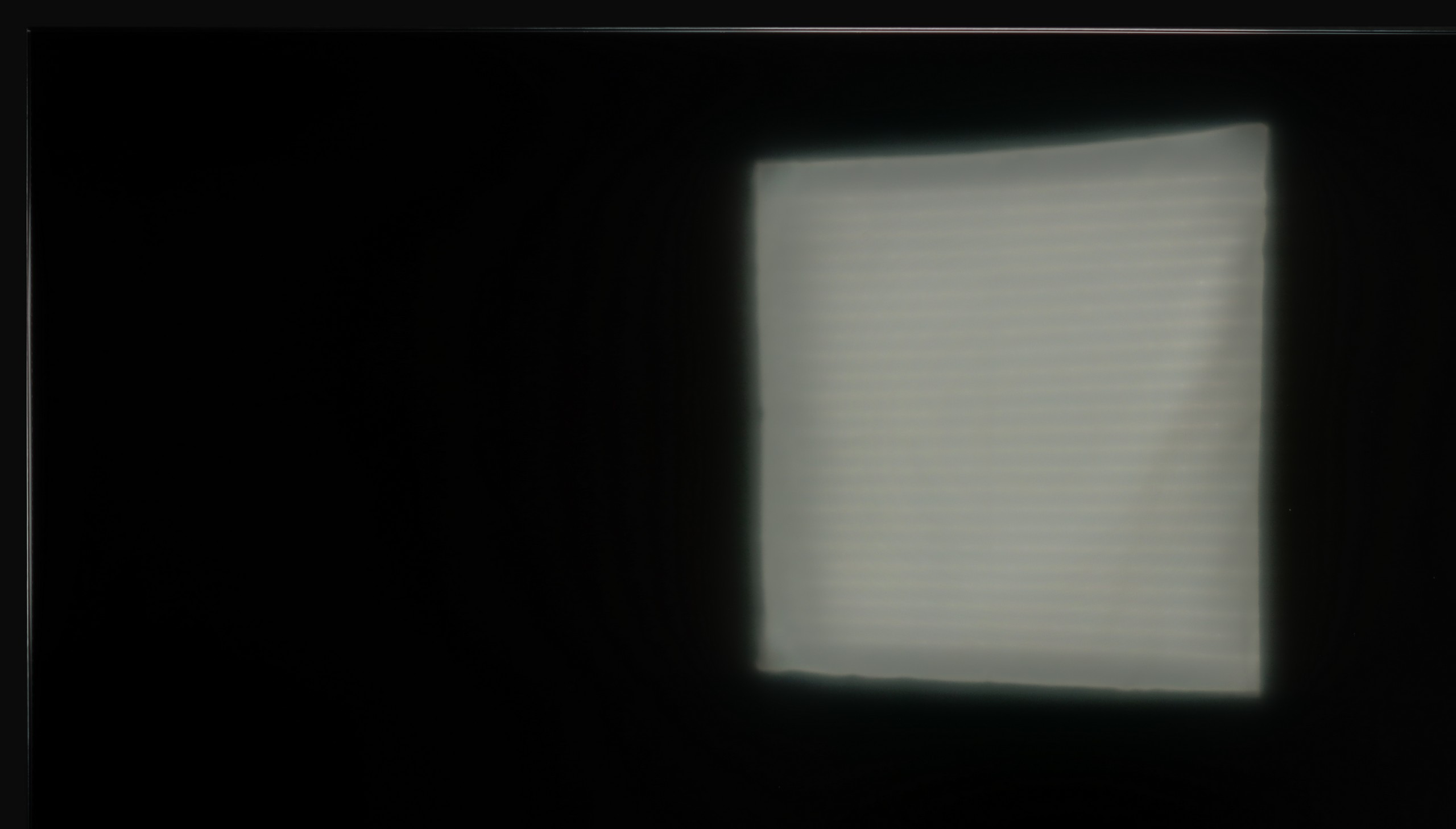


Matrix brightness
Average luminance SDR
TCL C7K / QM7K 55"-85": 529 cd/m2
Sony X90L: 784 cd/m2
The performance of the television Sony X90L during the day is very good. The satin matrix effectively dampens reflections, which minimises glare and keeps the image clear even in bright rooms. An SDR brightness level of 785 cd/m² allows for comfortable viewing of standard television and lower quality materials regardless of the time of day. As a result, the X90L will perform excellently in both well-lit living rooms and more sunlit spaces.
Fortunately, the TCL C7K performs quite well in a bright room. The applied matrix has a satin finish that effectively suppresses reflections, meaning we don't have to worry about reflections from lamps or windows even on sunny days. Importantly, the colours maintain their intensity and do not wash out, as can happen with weaker matte panels. As for the brightness itself, the average for content like YouTube or regular television reaches just below 500 nits. This is not a record-breaking result – for example, the MQLED85 (C765) performs better in this regard. However, it should work without major issues for everyday viewing during the day, as long as we do not plan to place it opposite a south-facing window without curtains.
Details about the matrix
Subpixel Structure:

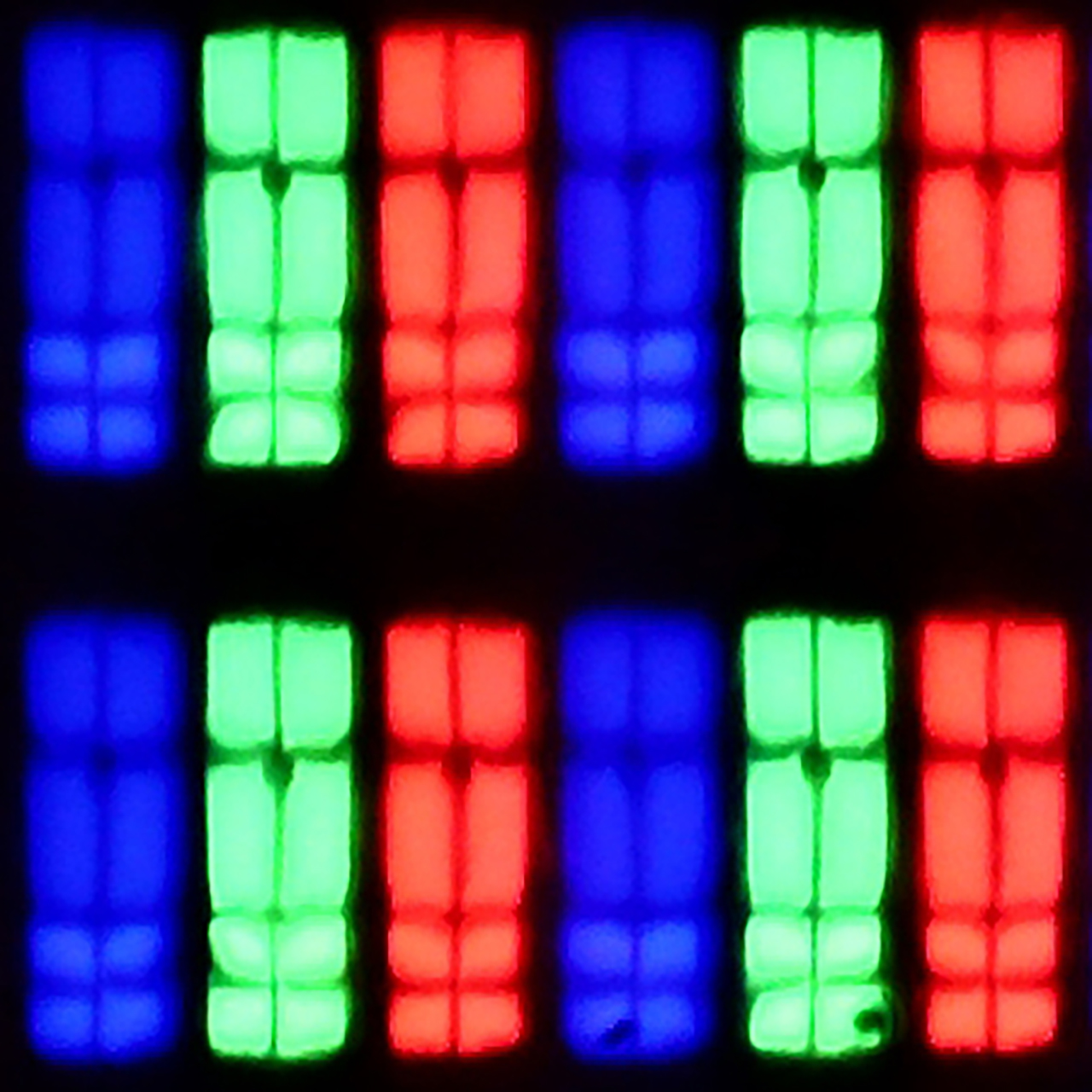
Panel uniformity and thermal imaging:

TV features
8/10
7.3/10
- HDMI inputs2 x HDMI 2.0, 2 x HDMI 2.1 48Gbps2 x HDMI 2.0, 2 x HDMI 2.1 48Gbps
- Other inputsRCA (Chinch)
- OutputsToslink (Optical audio), eARC (HDMI), ARC (HDMI)Toslink (Optical audio), eARC (HDMI), ARC (HDMI)
- Network InterfacesWi-Fi 2.4GHz, Wi-Fi 5GHz, Ethernet (LAN) 100MbpsWi-Fi 2.4GHz, Wi-Fi 5GHz, Ethernet (LAN) 100Mbps
- TV receptionDVB-T, DVB-T2, DVB-S, DVB-S2, DVB-CDVB-T, DVB-T2, DVB-S, DVB-S2, DVB-C
Classic features:
- Recording to USB (terrestrial TV)
- Recording programming
- Picture in Picture (PiP)
- RF remote control (no need to aim at the screen)
- Backlit remote control
- Teletext
- Audio only mode
- Bluetooth headphones support
- Simultaneous Bluetooth headphones & TV audio
Smart features:
- AirPlay
- Screen mirroring (Windows Miracast)
- Voice search
- Voice search in native language
- Ability to connect a keyboard and mouse


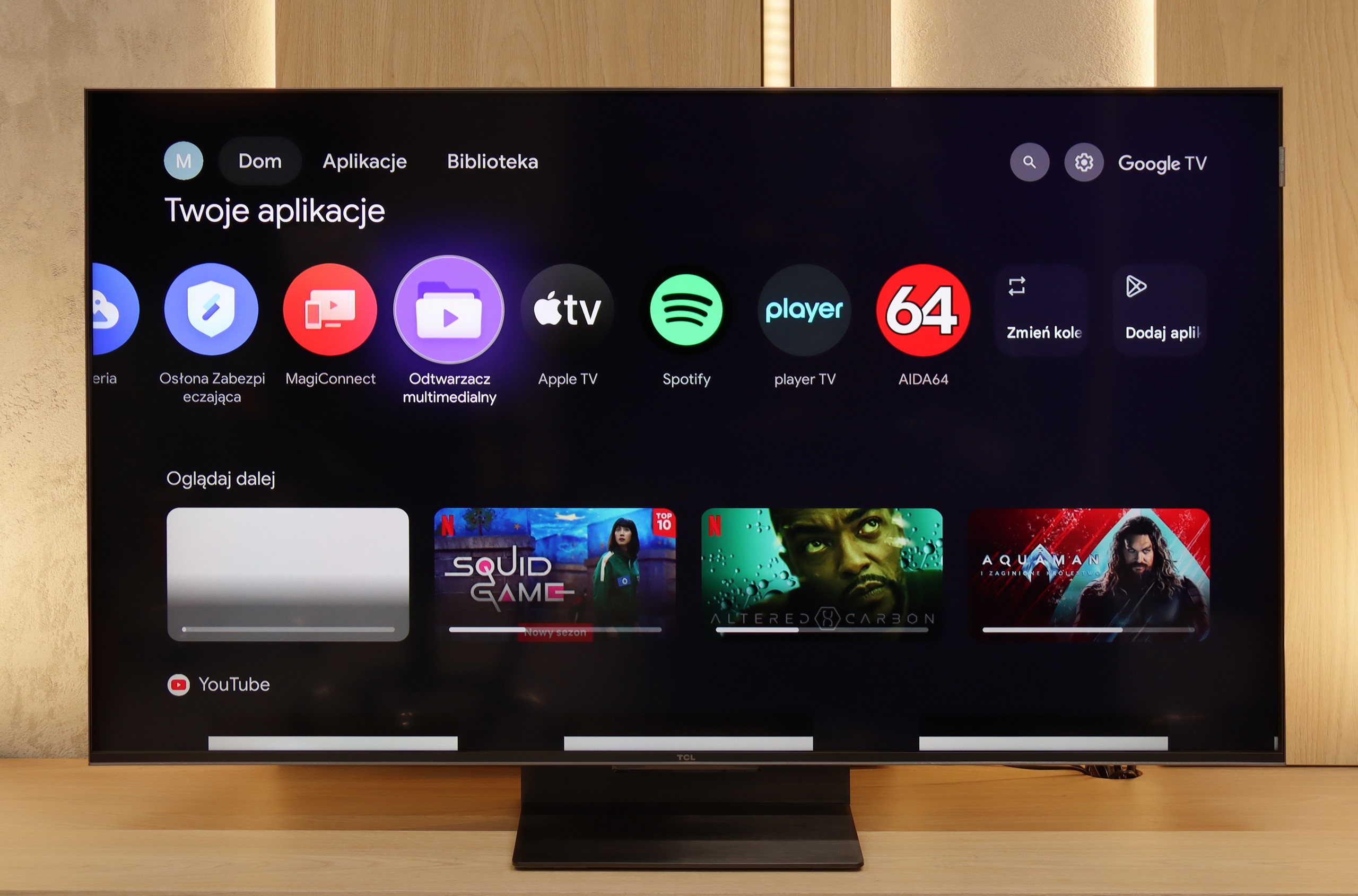
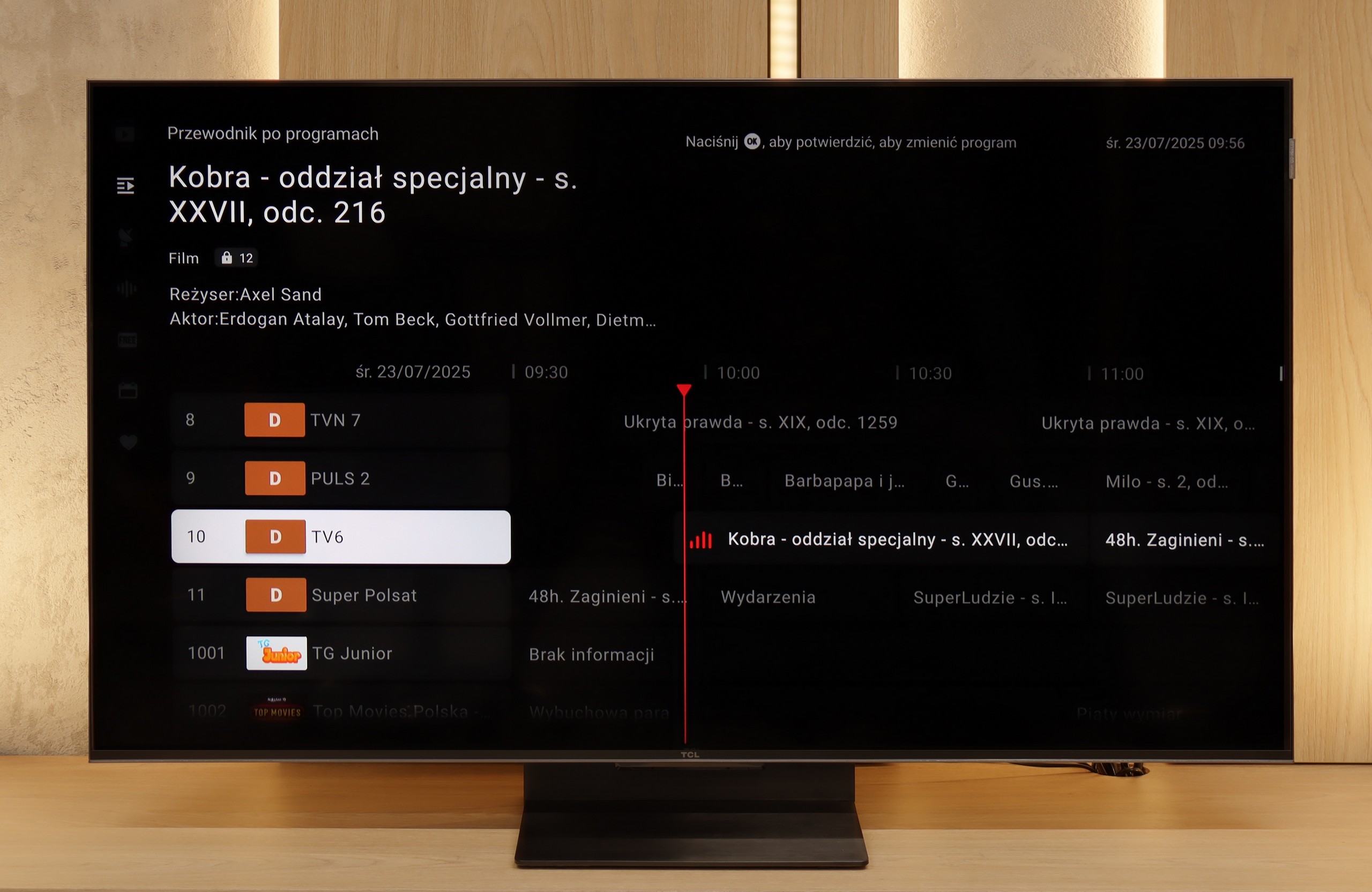
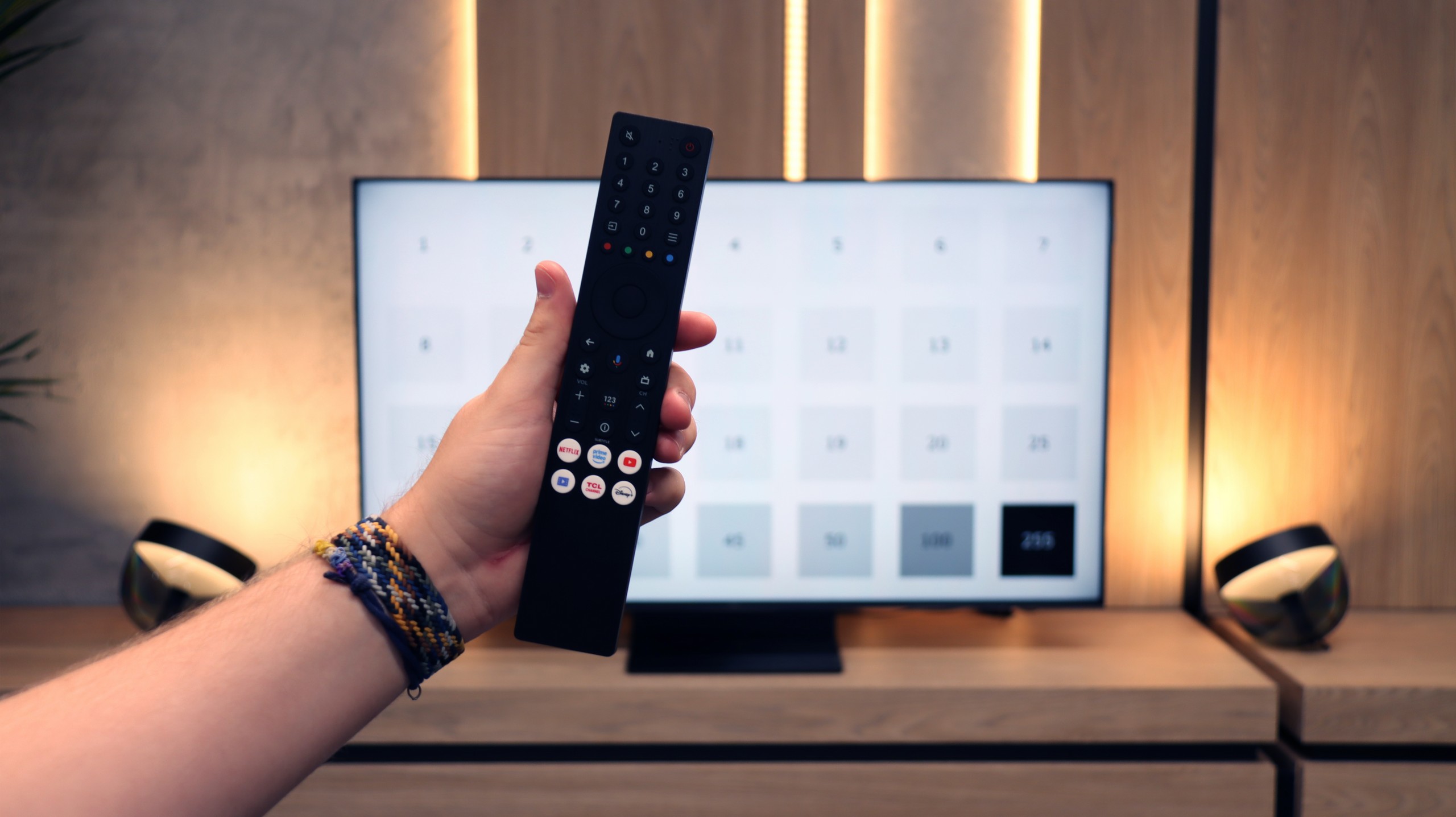
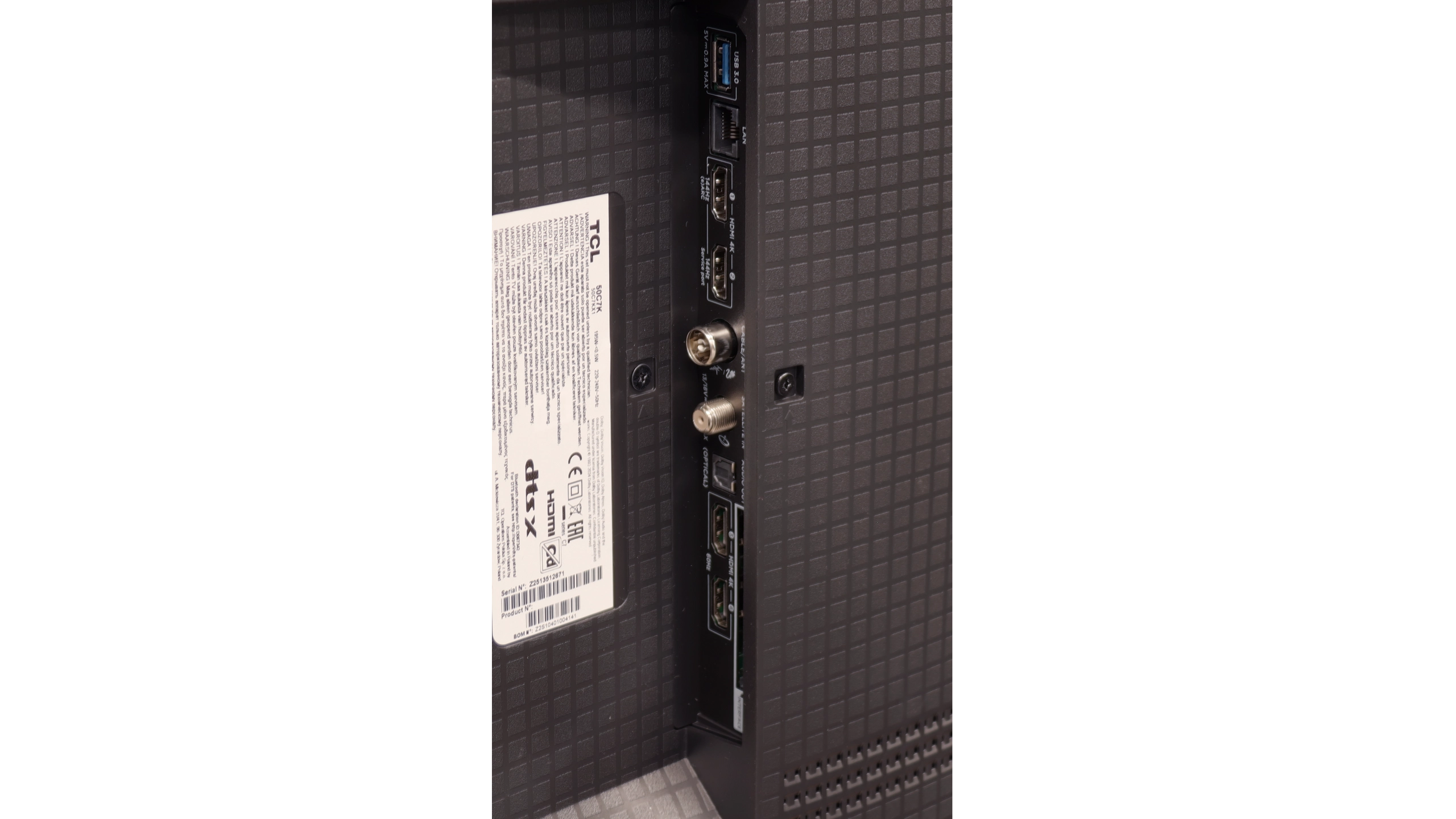
Sony X90L offers a rich set of features, starting with the Google TV system, which is the heart of entertainment. This solution provides access to a vast array of applications and streaming services, and the interface is intuitive and straightforward. With the support of a voice assistant, using the television becomes even more convenient – just one command is enough to find your favourite films, series, or music. Google TV operates smoothly and allows for full personalisation, making everyday use enjoyable and hassle-free.
The television also offers a number of user-friendly features. It supports AirPlay and Miracast, enabling easy content sharing from mobile devices. Additionally, other devices can be connected via Bluetooth, which enhances versatility and user convenience. For those who prefer traditional television viewing, there is even a recording feature available without the need for an external decoder, which is a significant advantage for fans of live shows.
In terms of design, Sony X90L may not be the sleekest, but its appearance is impressive thanks to a metal frame that adds elegance. The television is equipped with a base that can be positioned in three different ways, allowing for adjustments according to different spaces and user preferences.
SmartTV: GoogleTV
The greatest strength of the TCL C7K in everyday use is undoubtedly the Google TV system. Thanks to it, we have access to an almost endless library of apps, including some more niche ones that are often unavailable on other platforms. The built-in Google Assistant understands Polish, so we can easily ask what is on TV, what the weather is like, and even issue a few voice commands to control the television. The presence of Chromecast and AirPlay is also a plus, as they work seamlessly and make life easier.
User Features
However, the classic features leave something to be desired. Here we will find the basics – teletext, EPG, or the option to connect headphones – but that's about it. There is a lack of USB recording functionality or picture-in-picture (PiP) mode, which can still be found with some competitors. It is also worth noting that Google TV in the TCL version can sometimes have oddly translated parts of the menu or minor errors in the interface. These are not things that interfere with everyday use, but those sensitive to details may notice them.
Playing files from USB
8.7/10
9.2/10
Supported photo formats:
Maximum photo resolution:

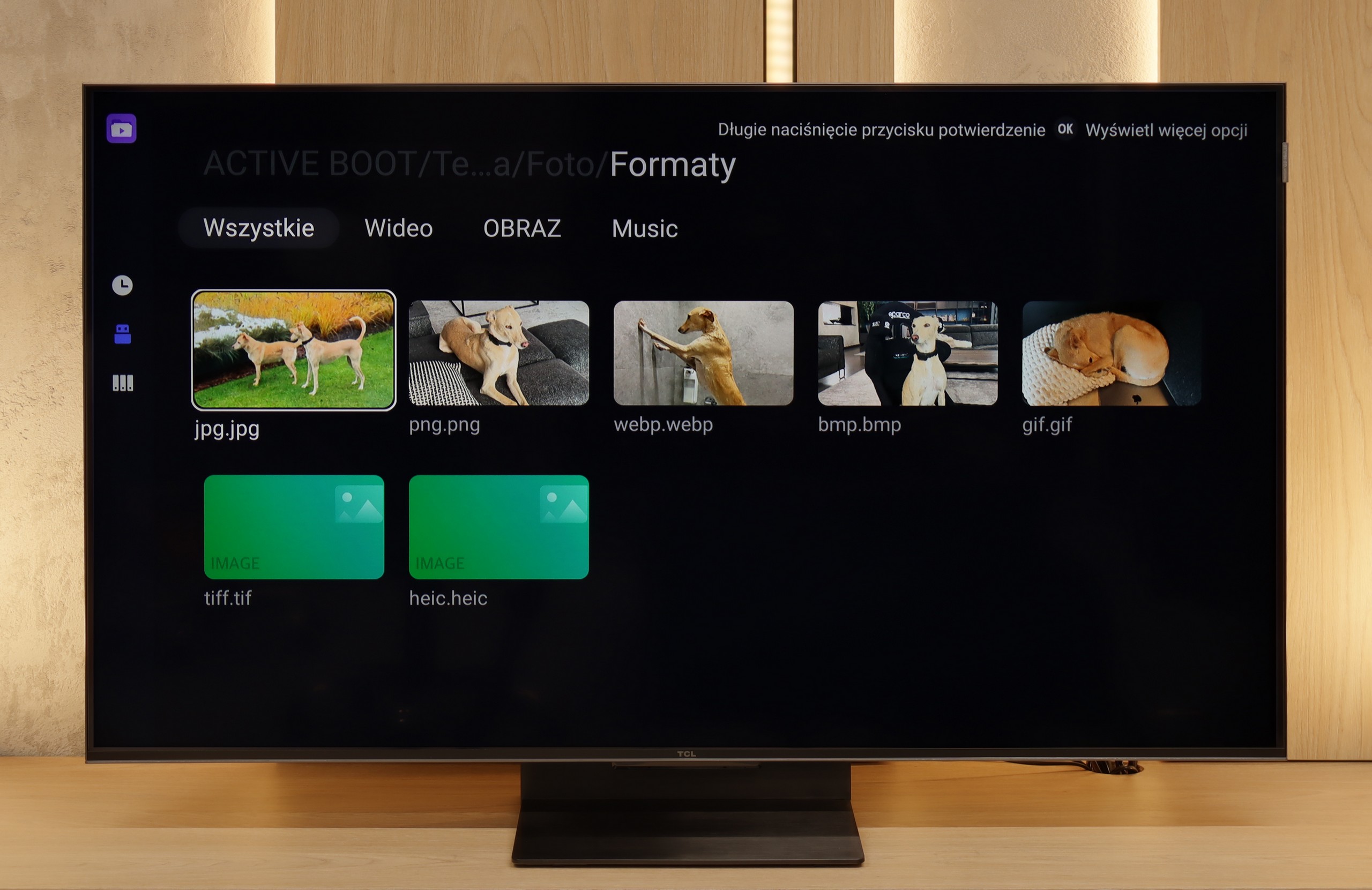
Sony X90L handles the playback of most popular file formats from USB without any issues, which is a big plus for those who often access external content. However, it is worth mentioning a slight downside – the built-in player does not allow for changing the font colour in subtitles, which may be problematic for some. Fortunately, thanks to the extensive Google TV system, users have a wide range of options. Alternative media players, which offer more personalisation options, can be easily installed.
The built-in media player on the TCL C7K performs really very well. It supports most of the most popular audio and video formats, so if we want to quickly throw something on from a USB drive and play it, there shouldn't be any problem. Of course, as is often the case, you can find some minor shortcomings – not every exotic codec will work (Apple's HEIC), not all subtitles will be perfectly synchronised (txt.). However, the biggest advantage of this television comes to the rescue, which is Google TV. With access to the Google Play store, we can easily install an alternative player, such as VLC, and then no files will be daunting.
Apps
9.6/10
9.6/10














































Sound
7/10
7.7/10
- Maximum volume--
- Dolby Digital Plus 7.1
- Dolby True HD 7.1
- Dolby Atmos in Dolby Digital Plus (JOC)
- Dolby Atmos in Dolby True HD
- DTS:X in DTS-HD MA
- DTS-HD Master Audio
The sound on the Sony X90L is pleasant and clear, and the presence of bass makes the audio richer. The television performs well when playing music, offering satisfactory audio experiences. An additional advantage is the support for Dolby Atmos and DTS technologies, which provide a more spatial and immersive sound. As a result, films, games, and music gain depth and realism, creating a better experience for the user.
In the larger versions of the C7K (from 55 inches upwards), the sound is even more impressive than in the smallest 50-inch variant. This is due to the greater number of built-in speakers and additional channels that allow for a fuller, more spacious sound. The bass becomes more pronounced, dialogues gain clarity, and the film effects can really fill the room.
It is worth mentioning the collaboration between TCL and the Bang & Olufsen brand, which appeared in the 2025 models. Even if we do not have a hundred percent certainty that original transducers from the Danish company are inside, the final effect surprises very positively. For a television without an additional soundbar, the larger C7K models deliver sound that can be enjoyed even during longer film screenings.


